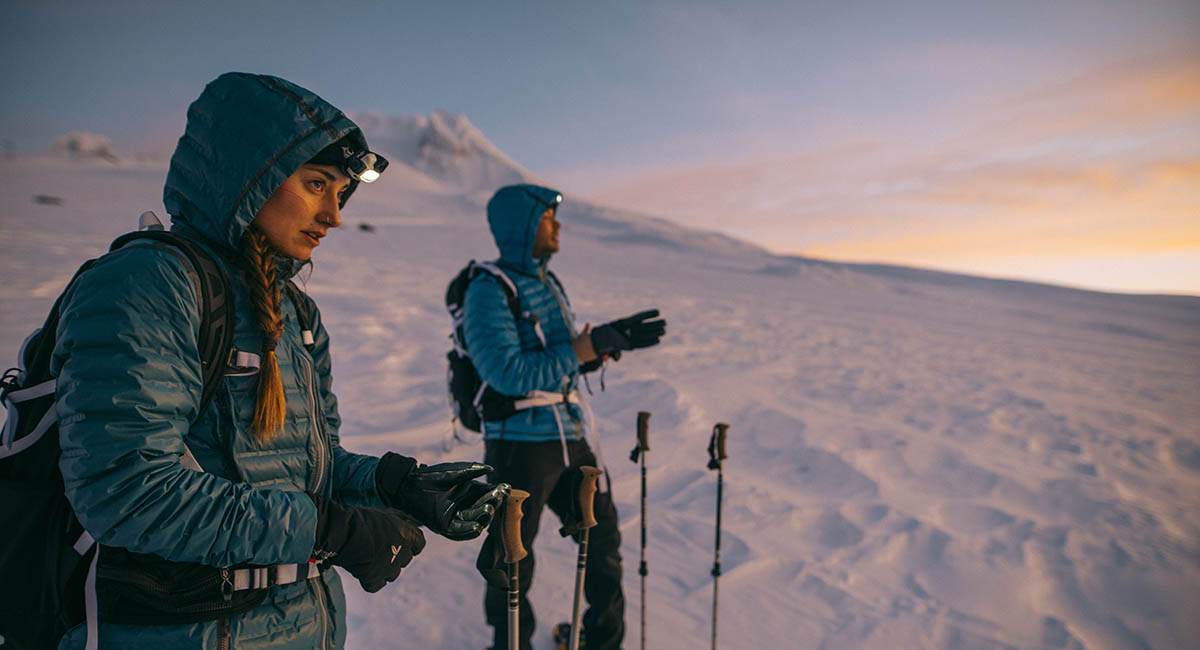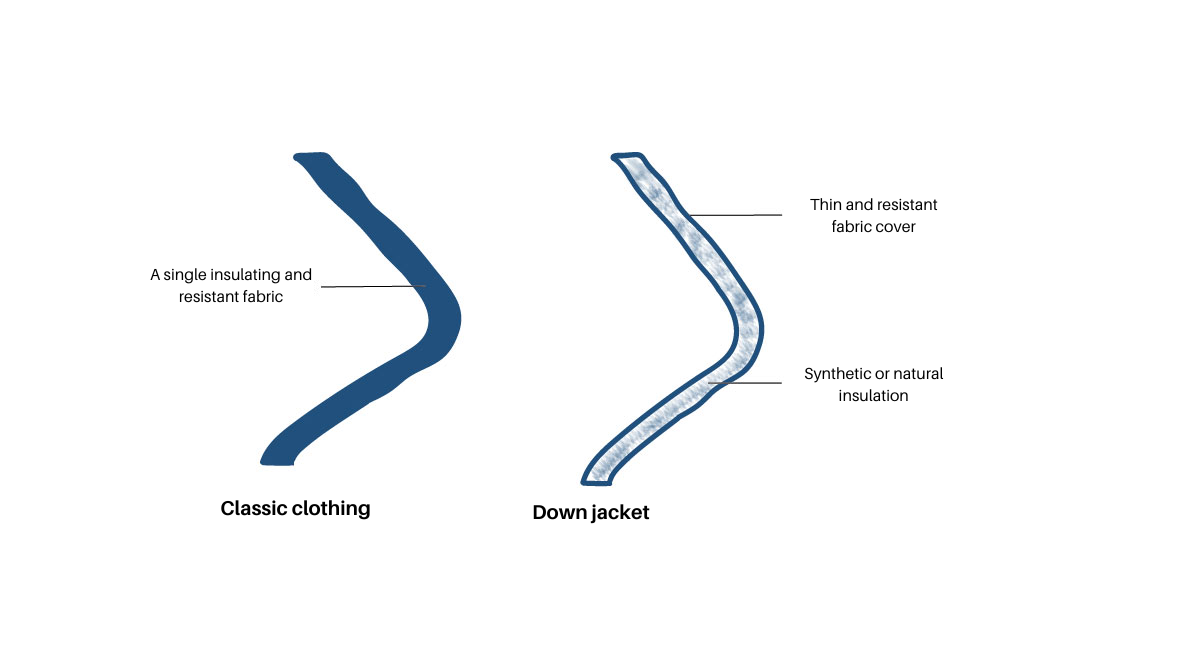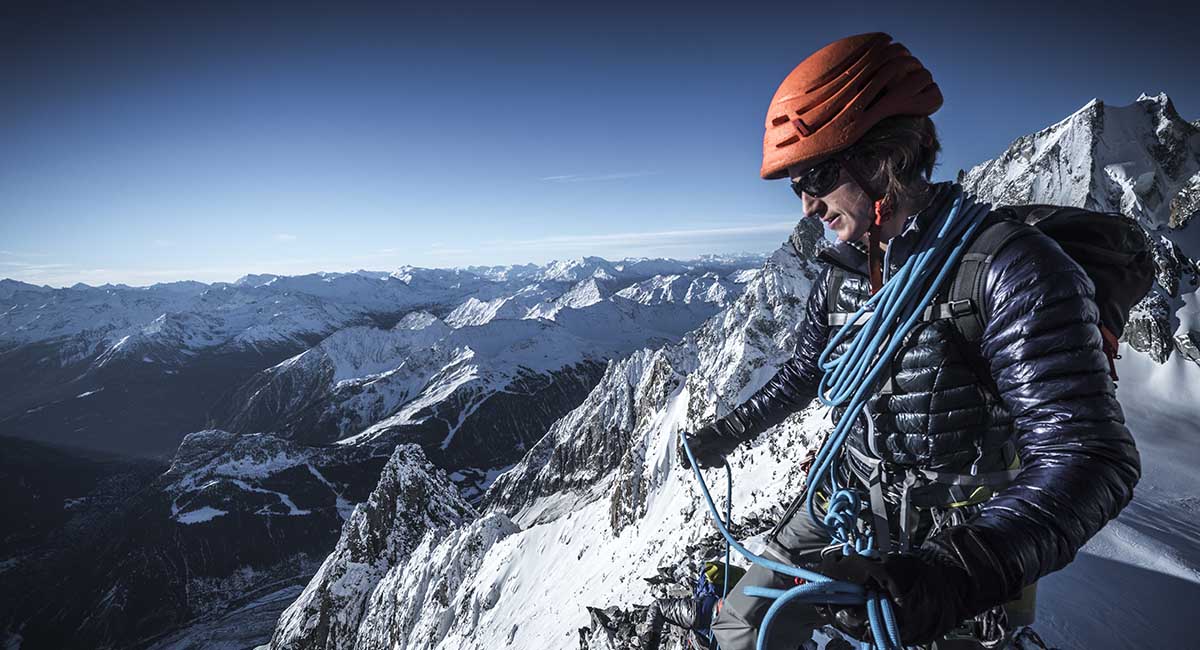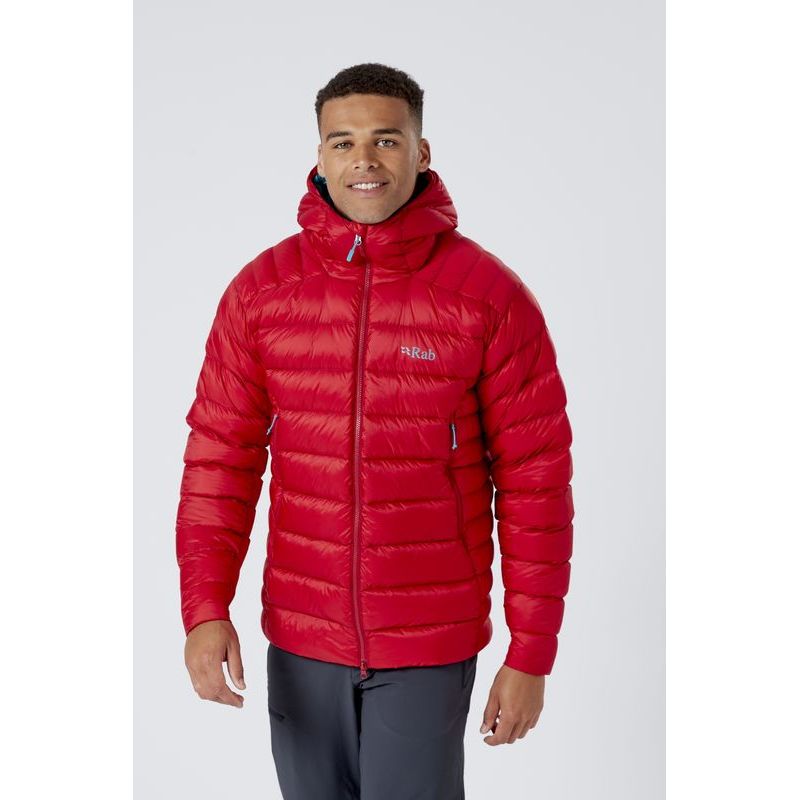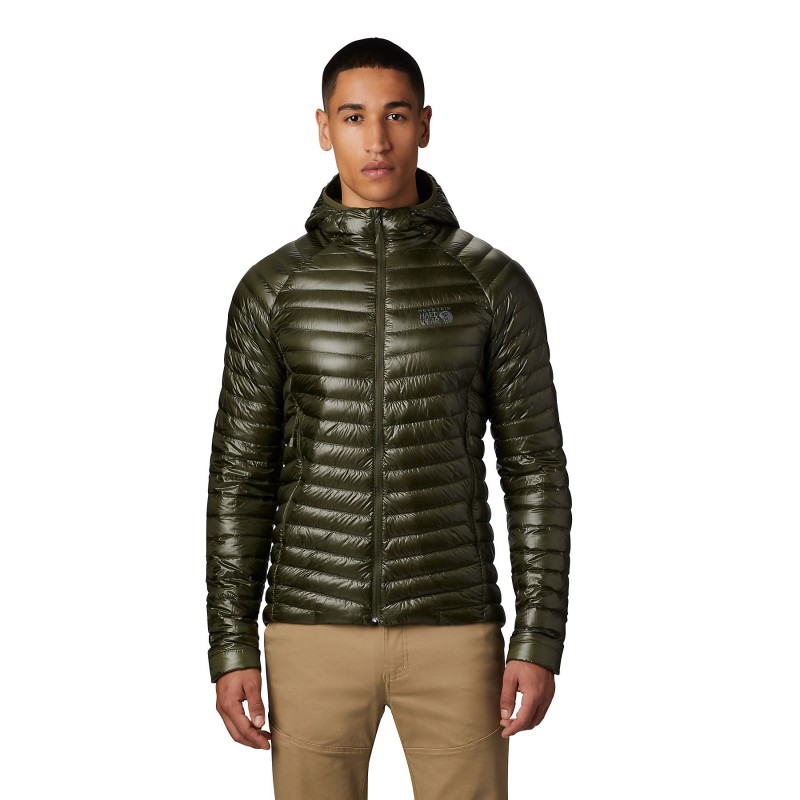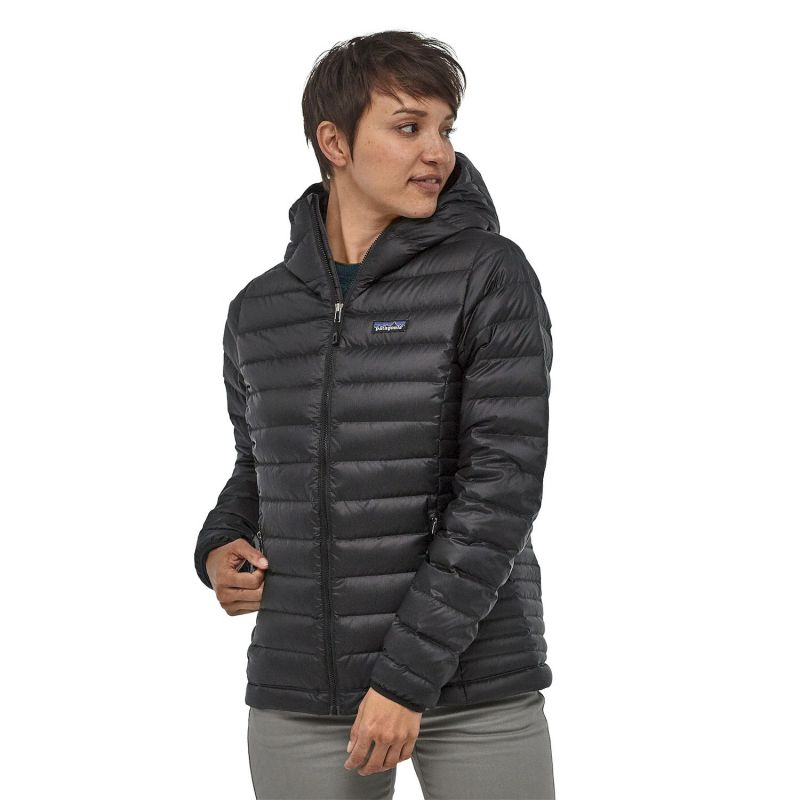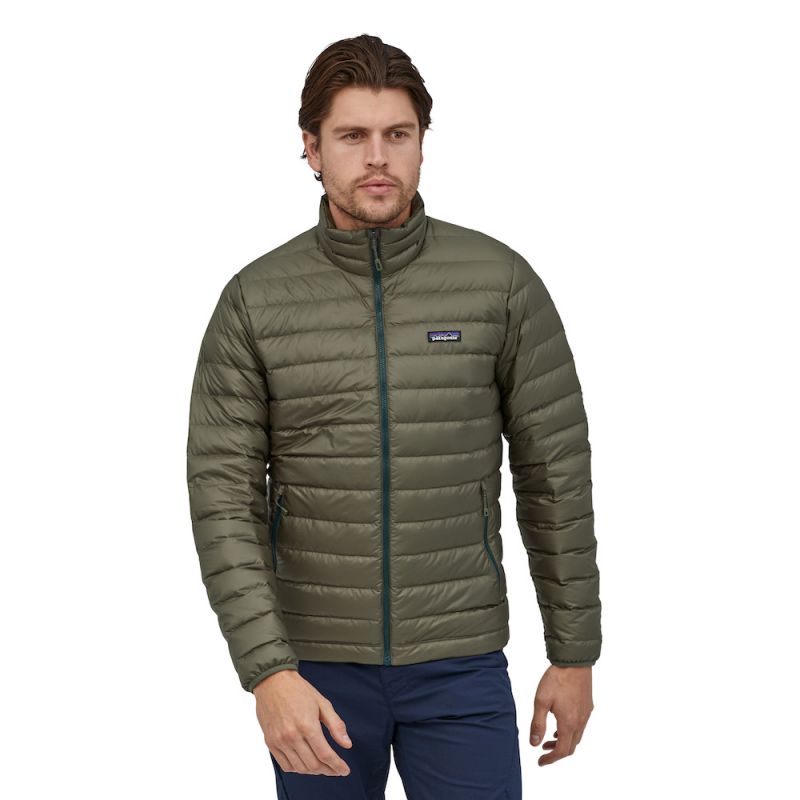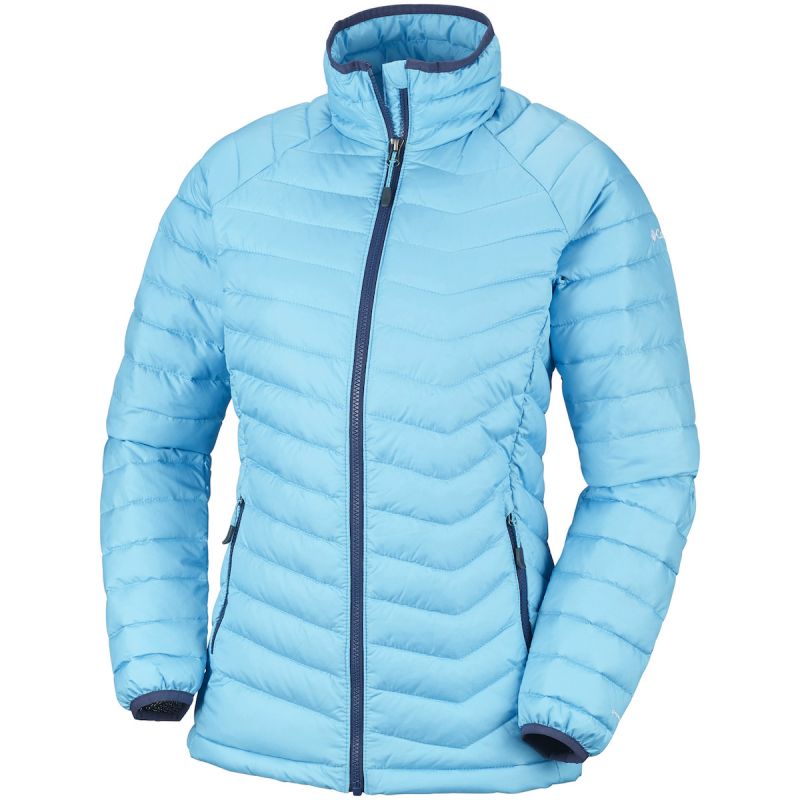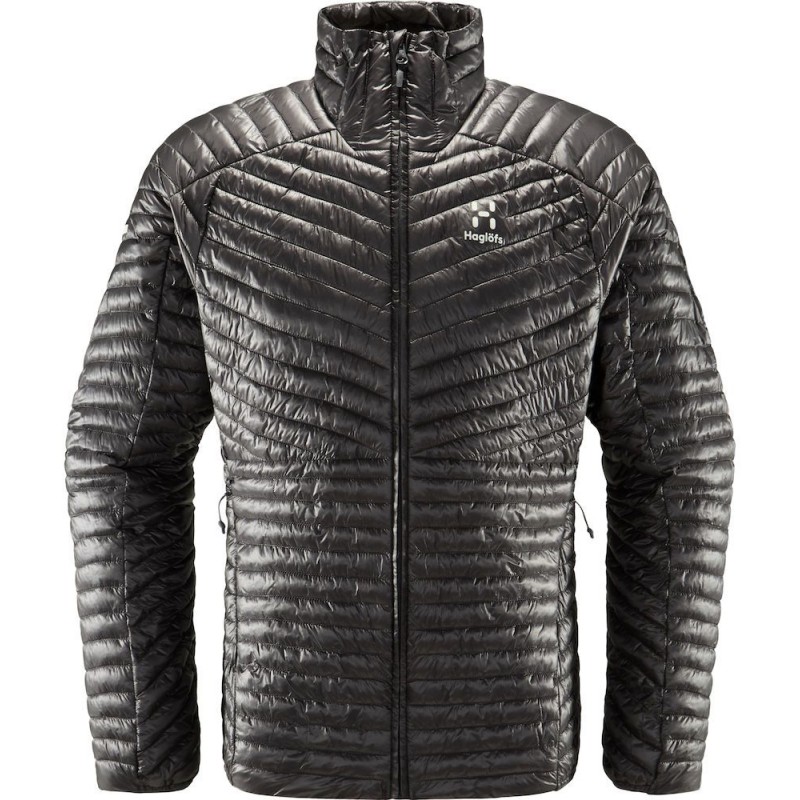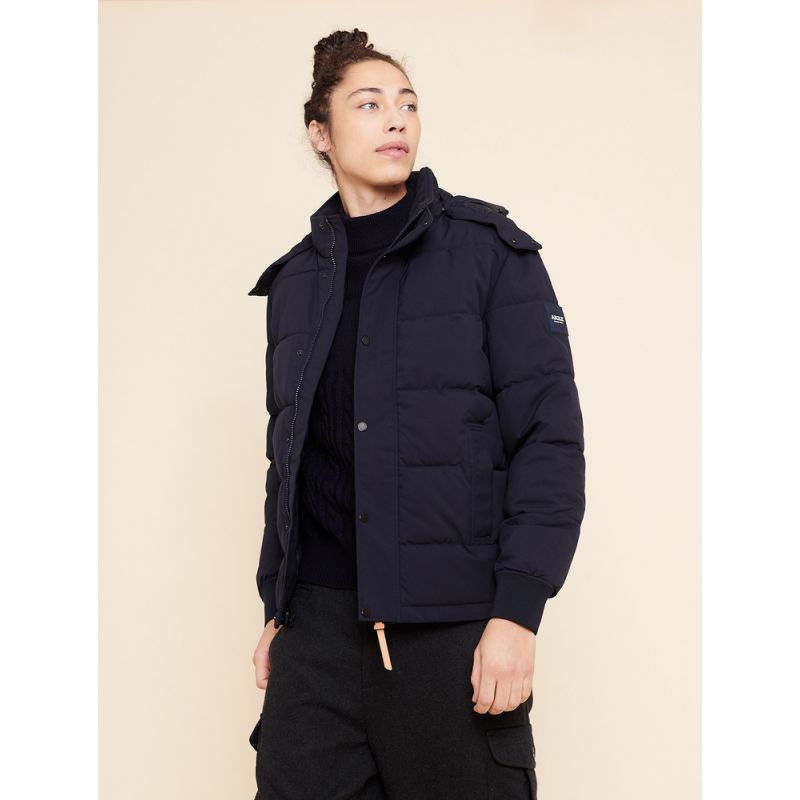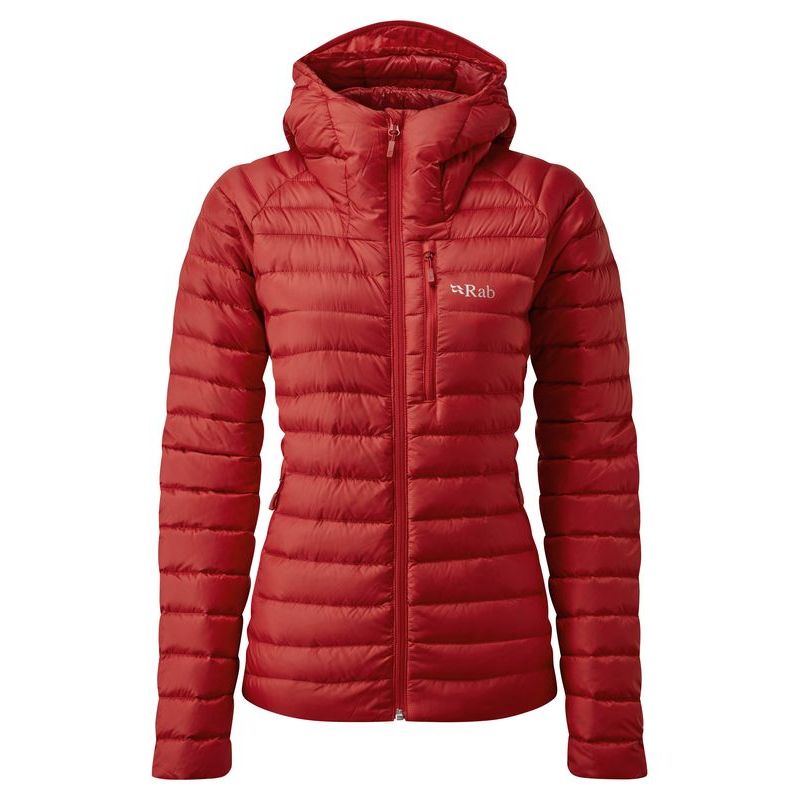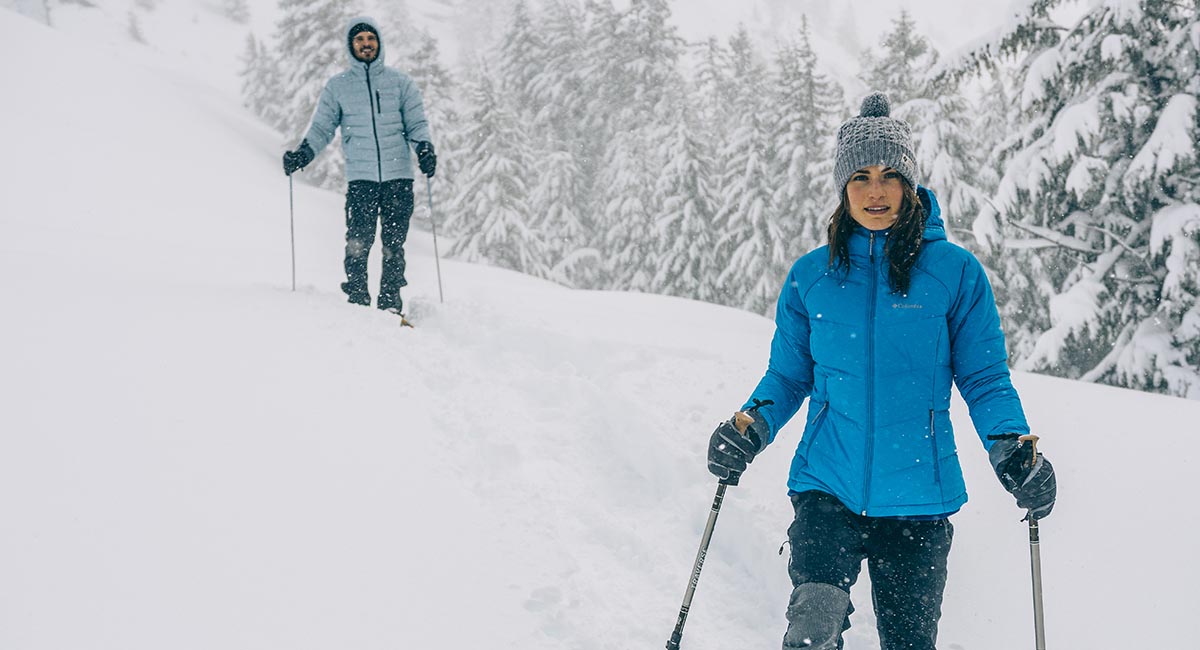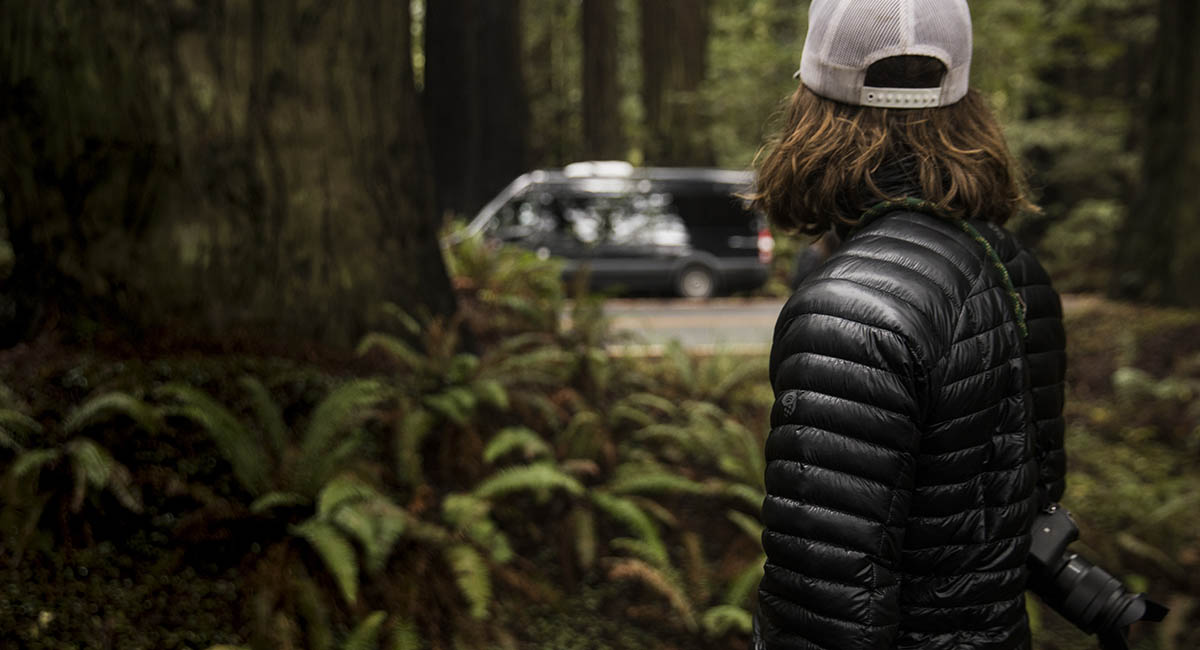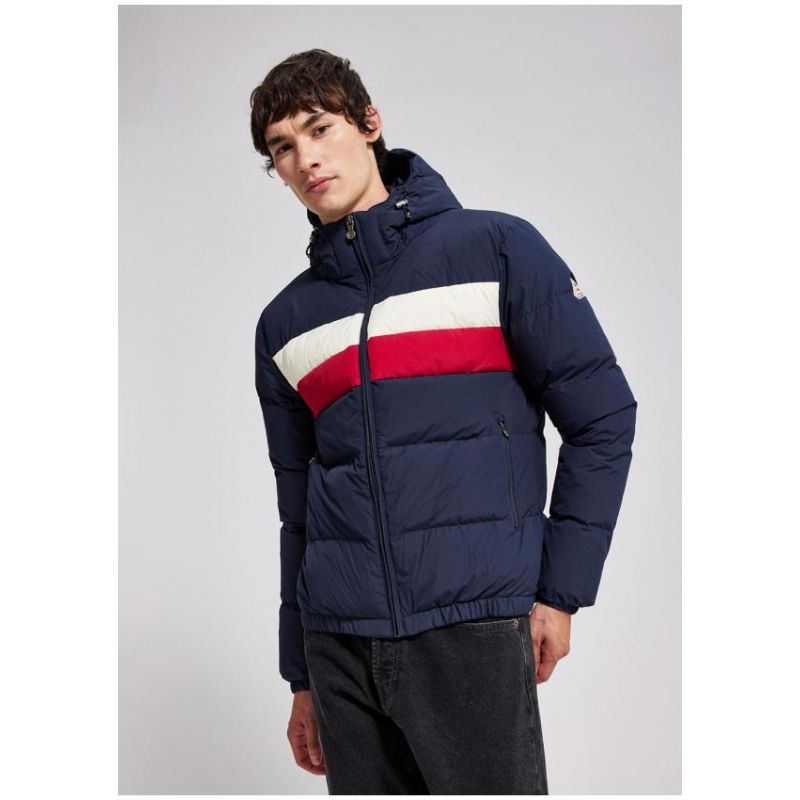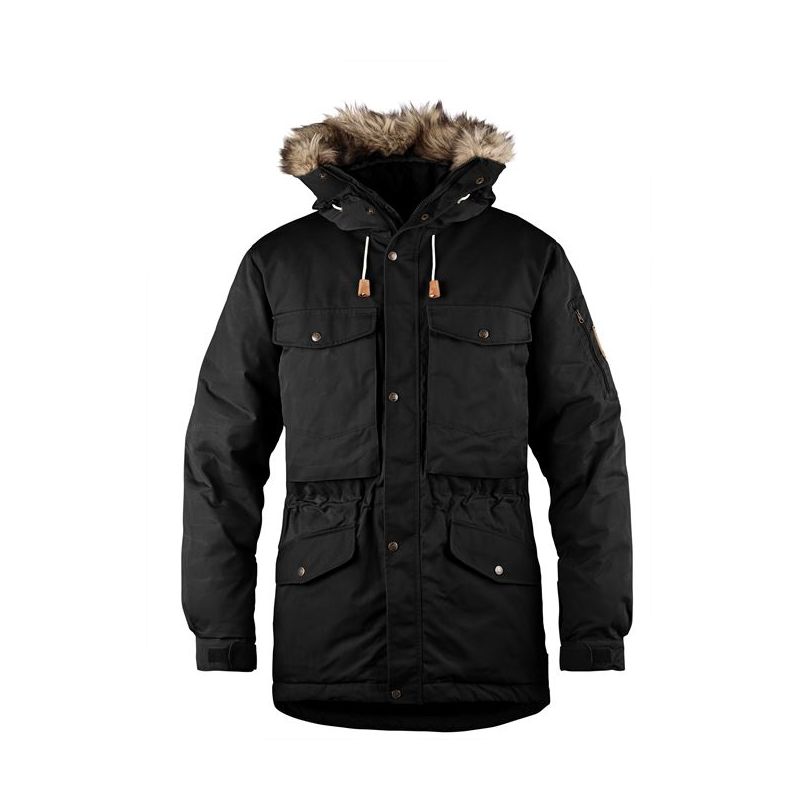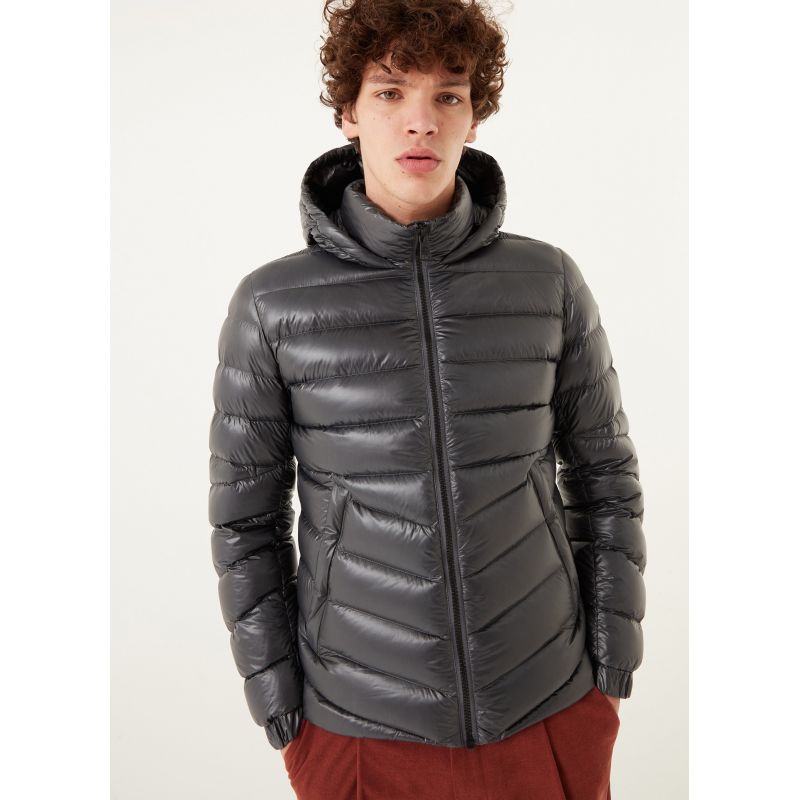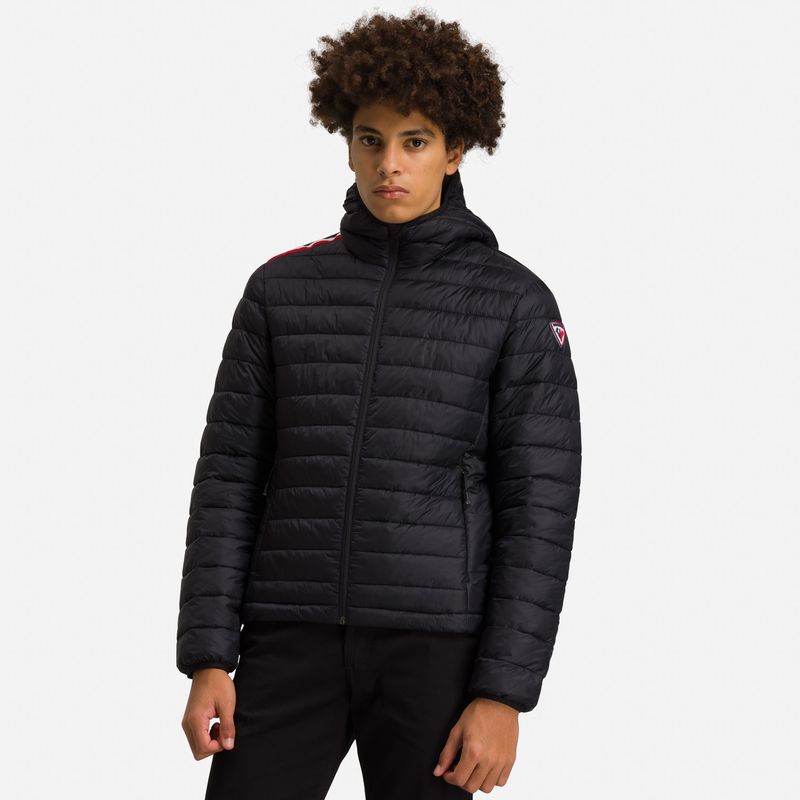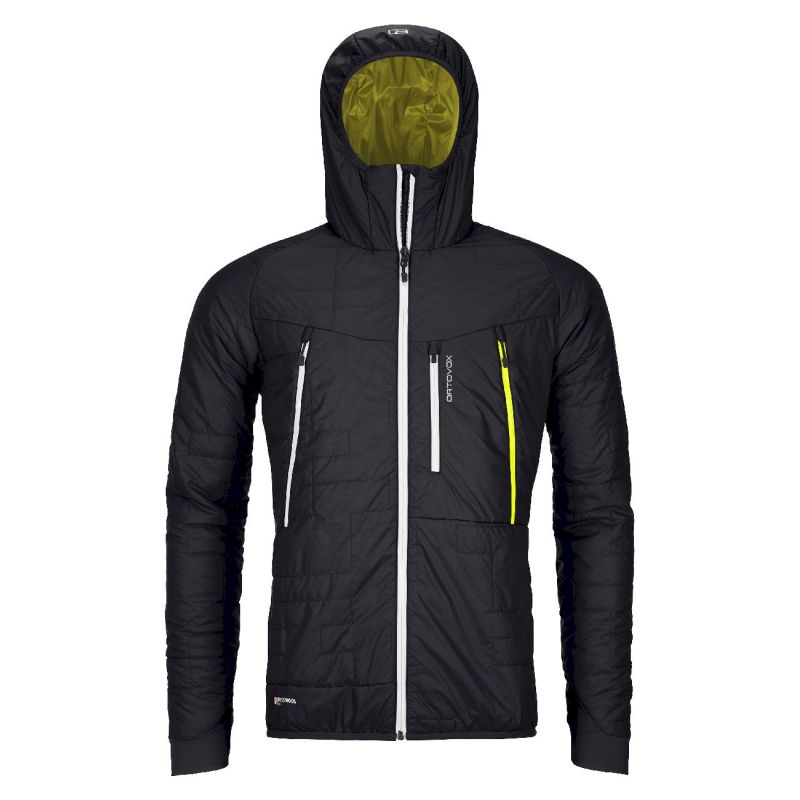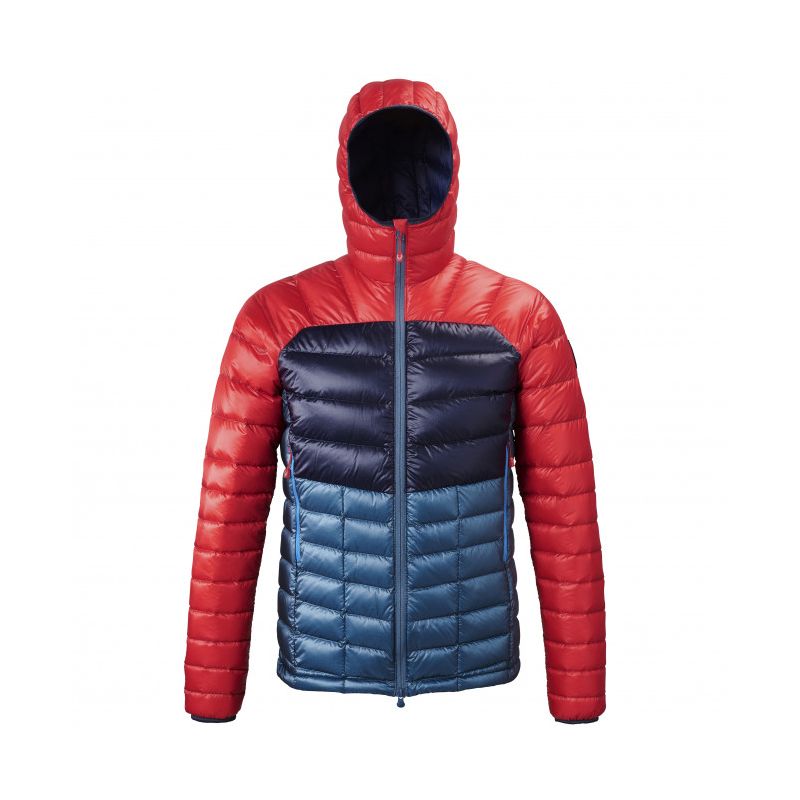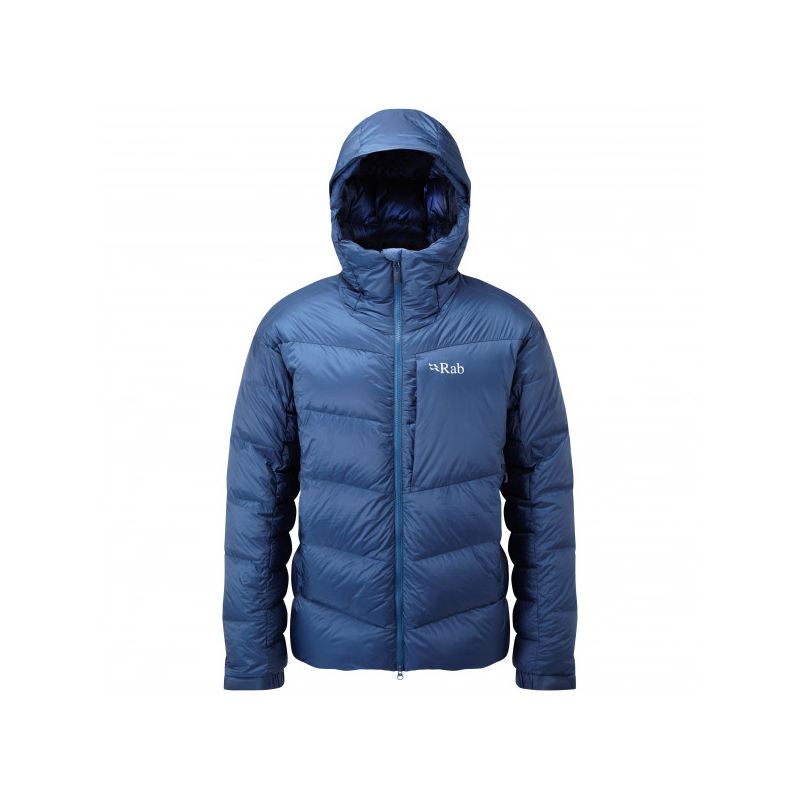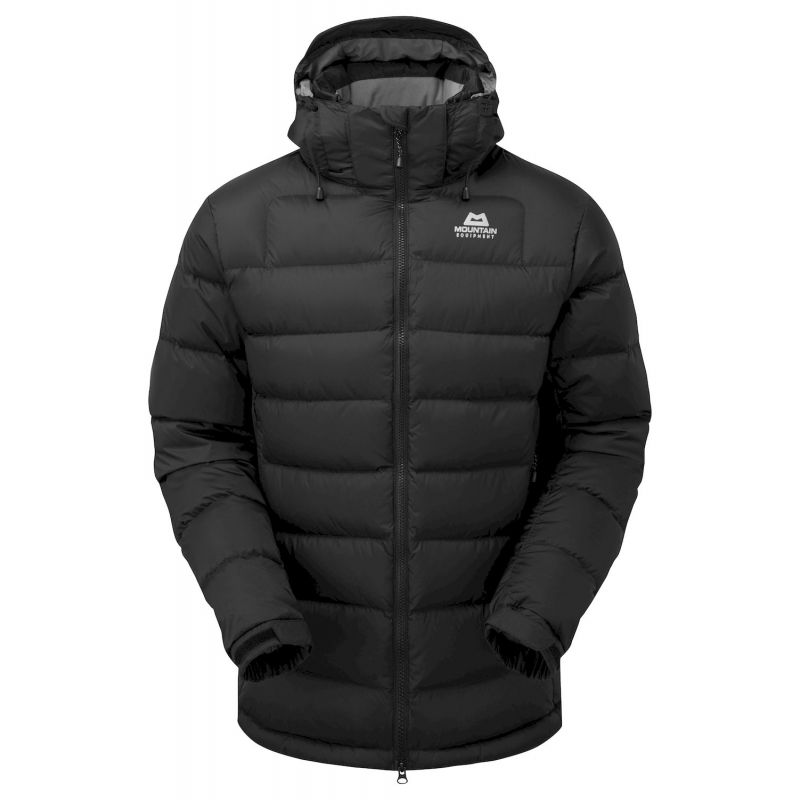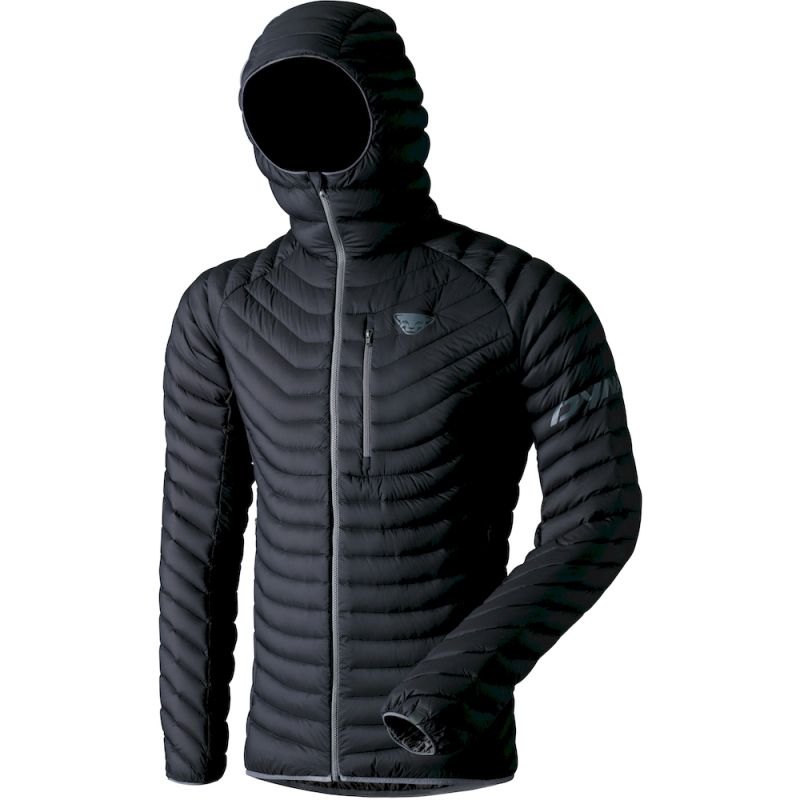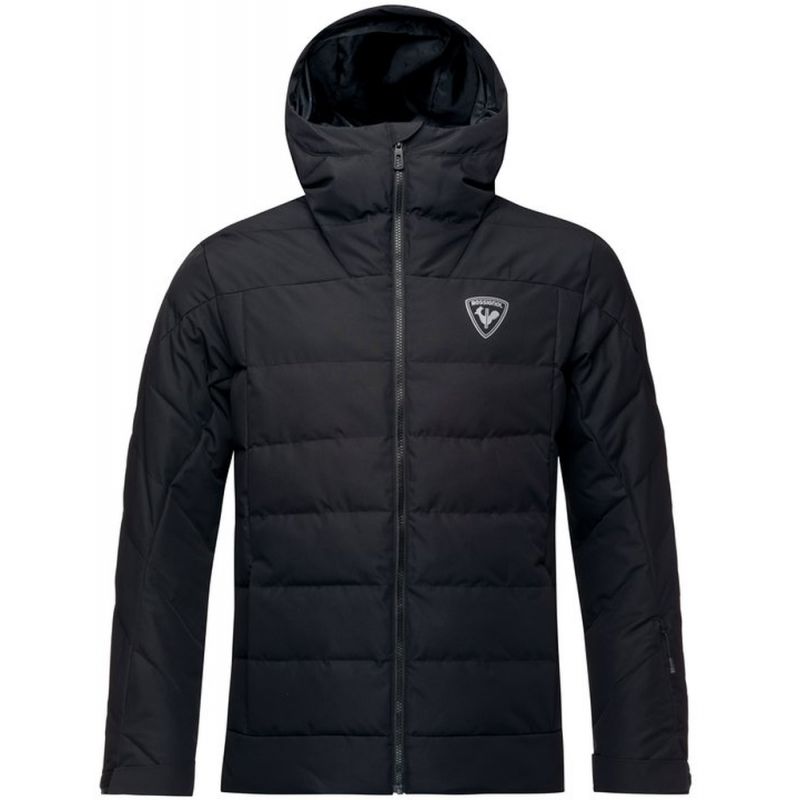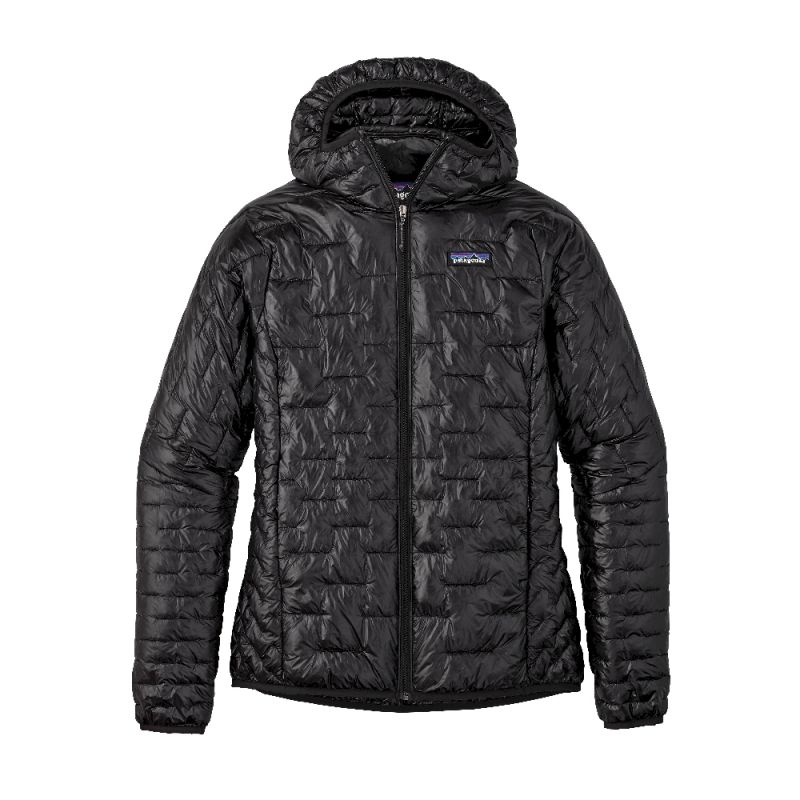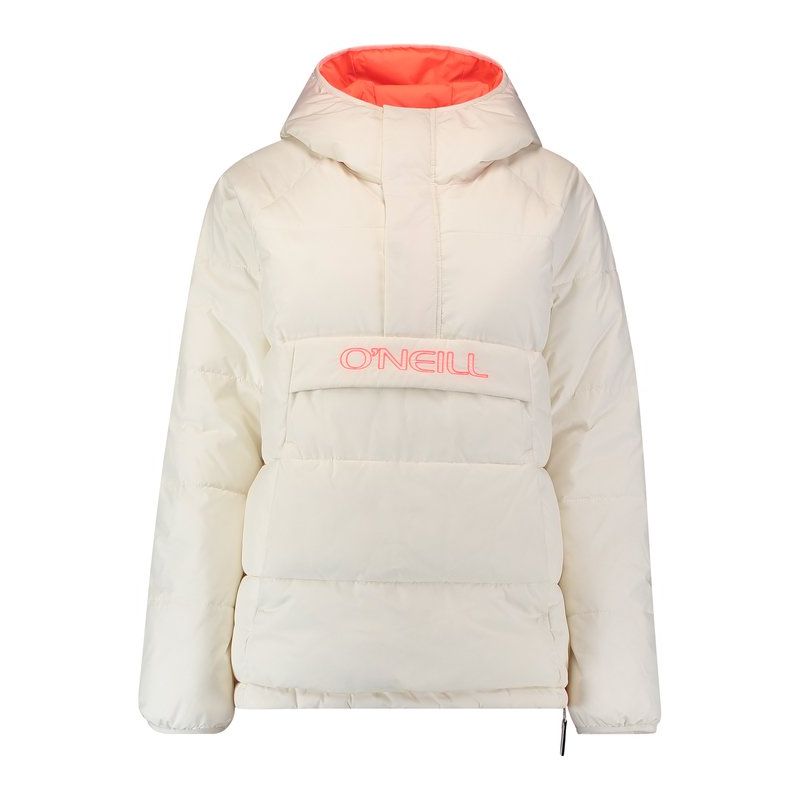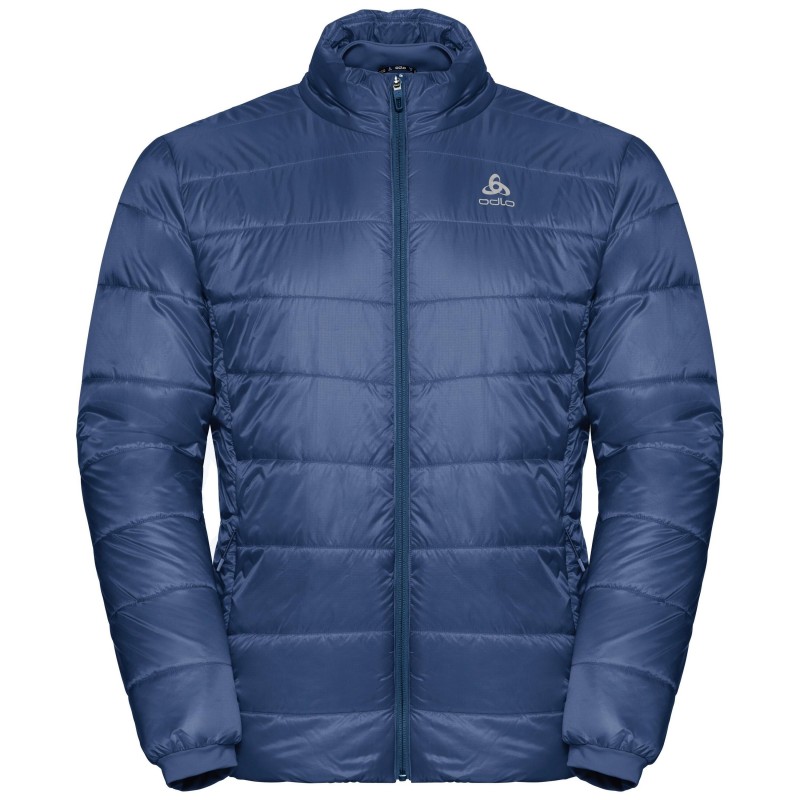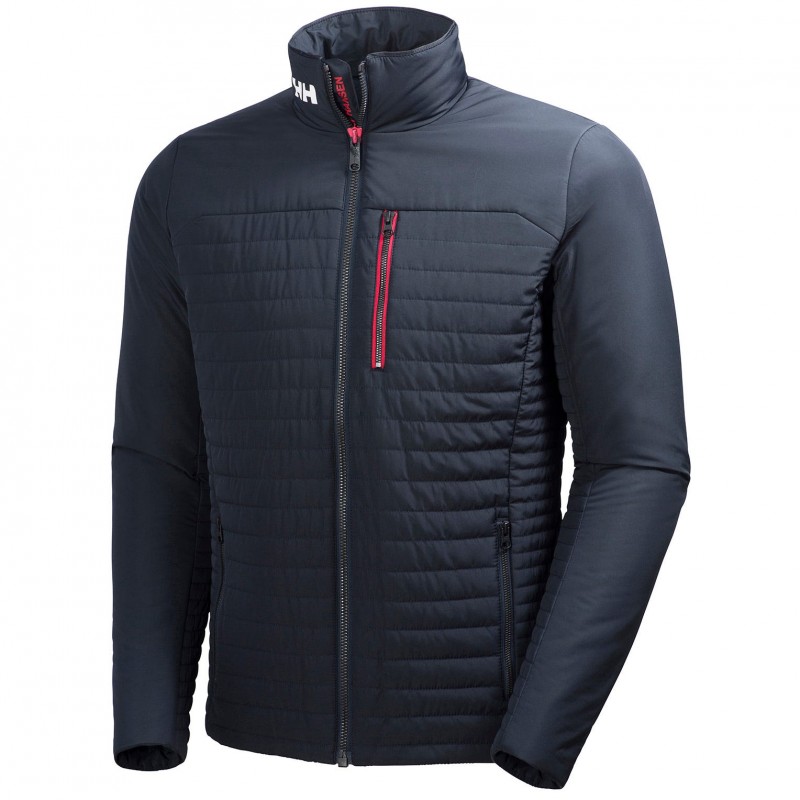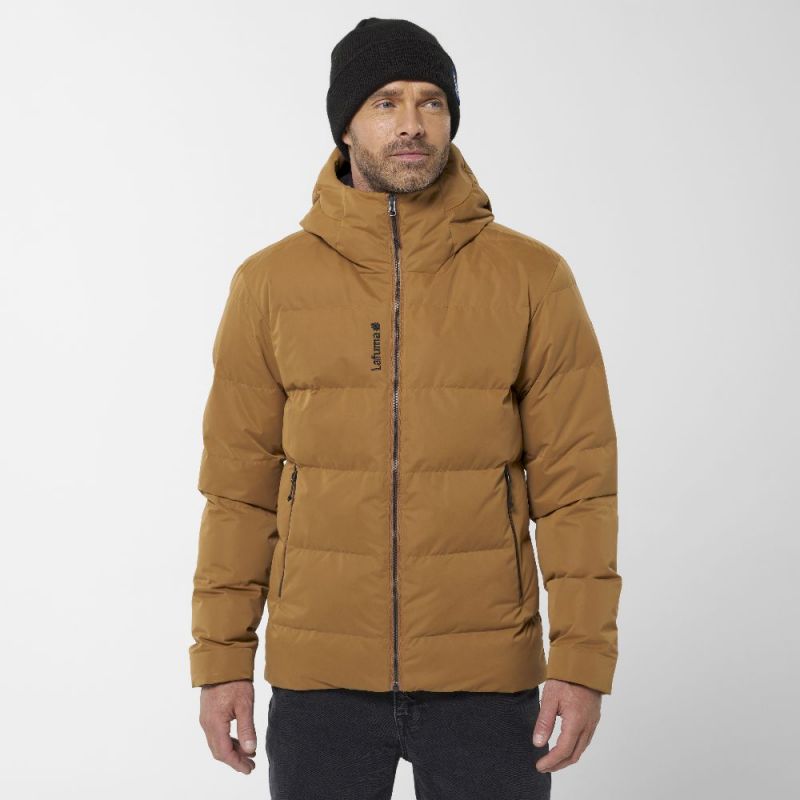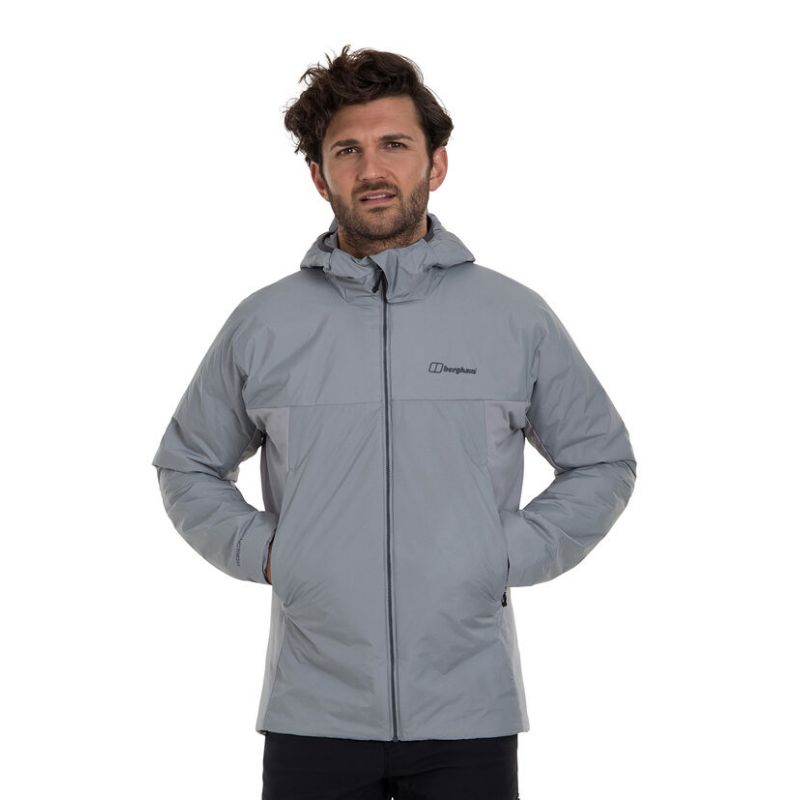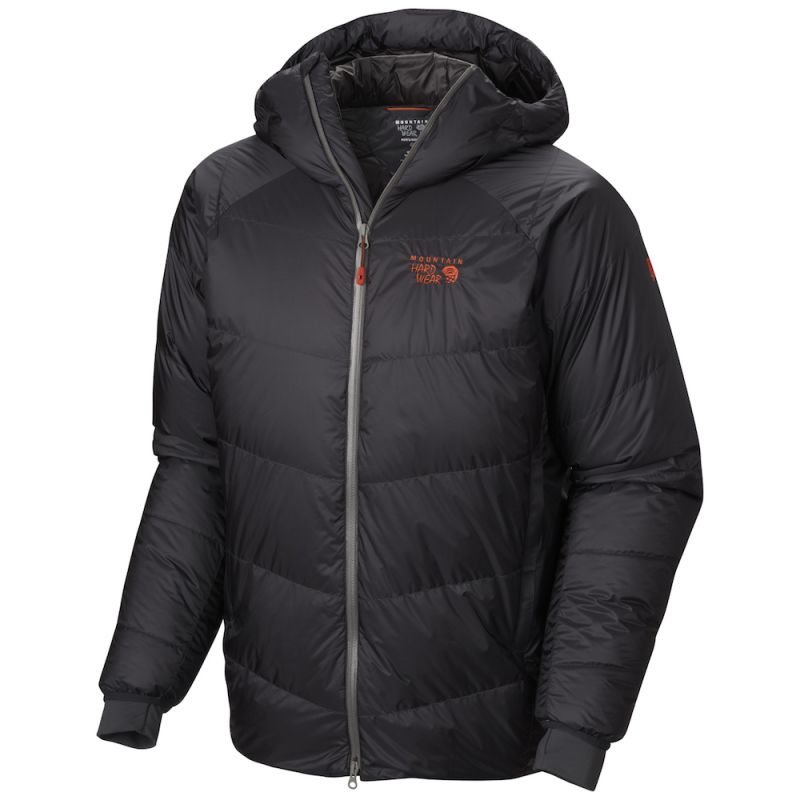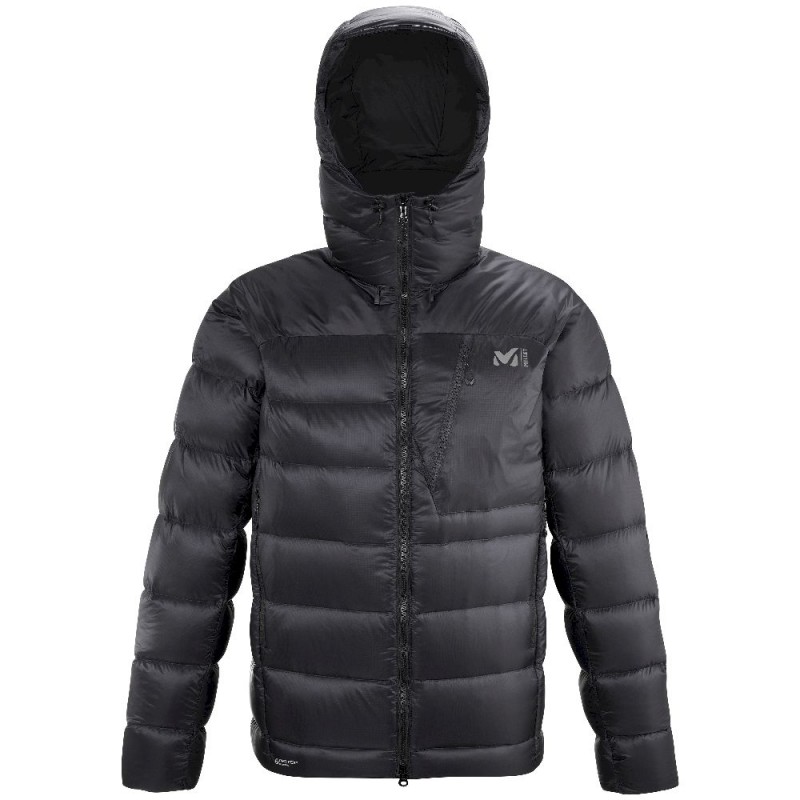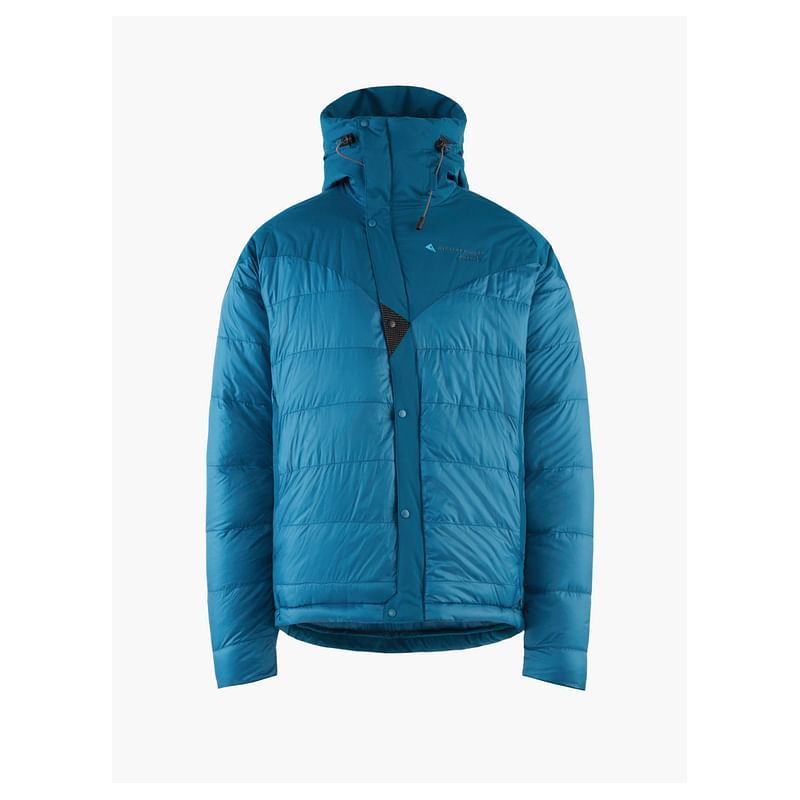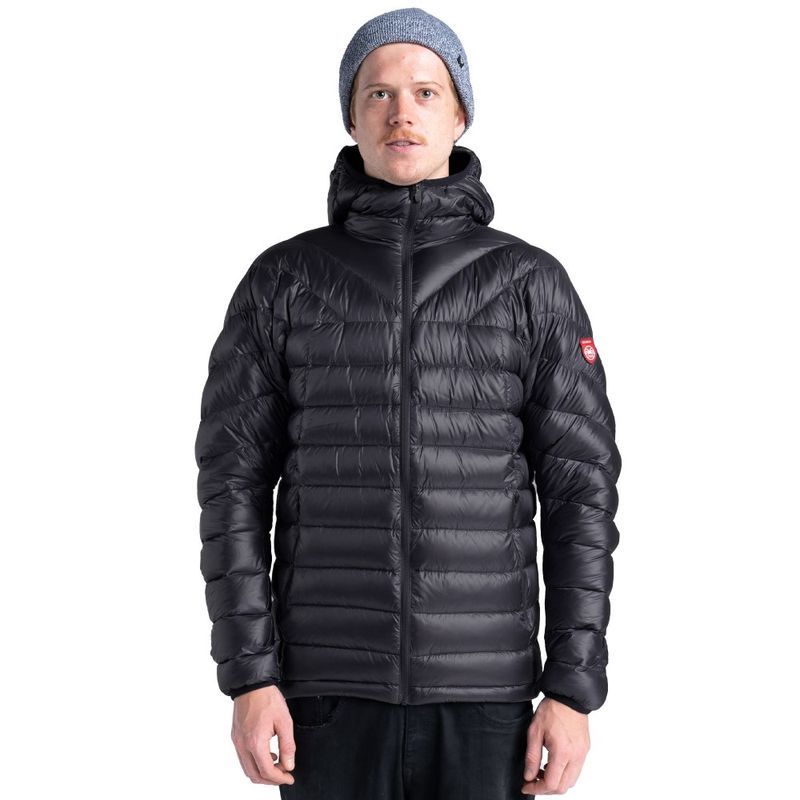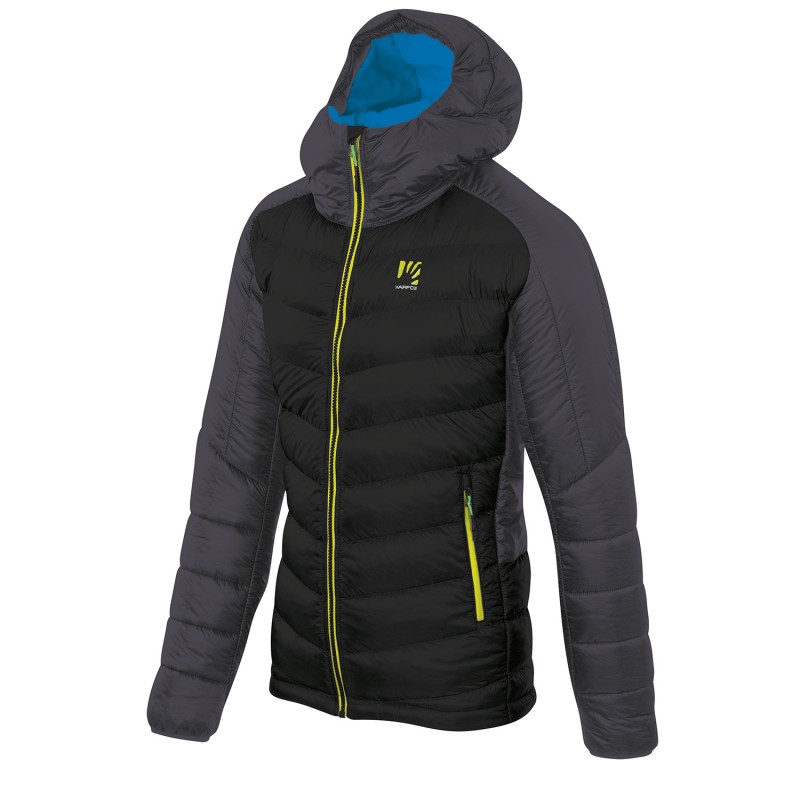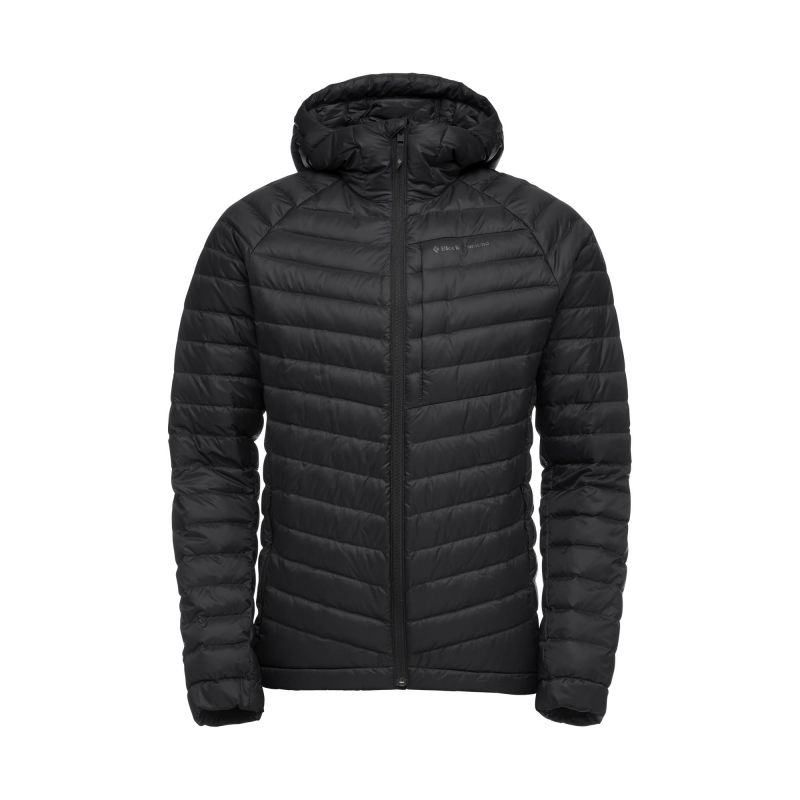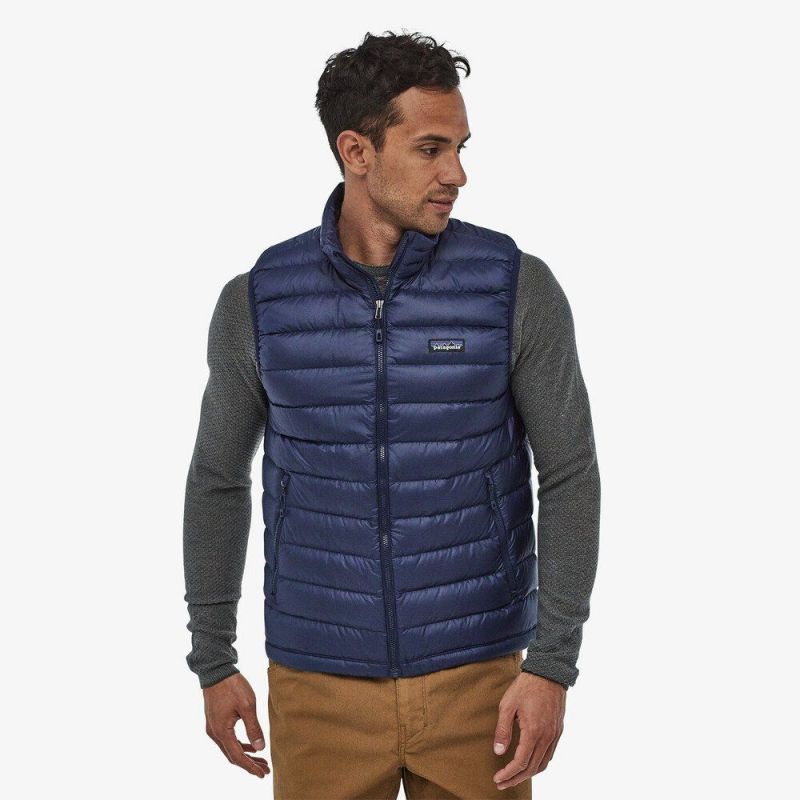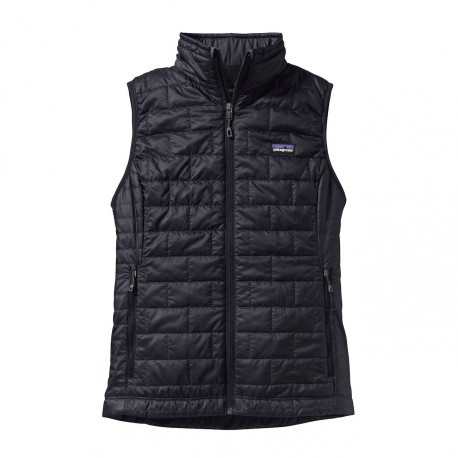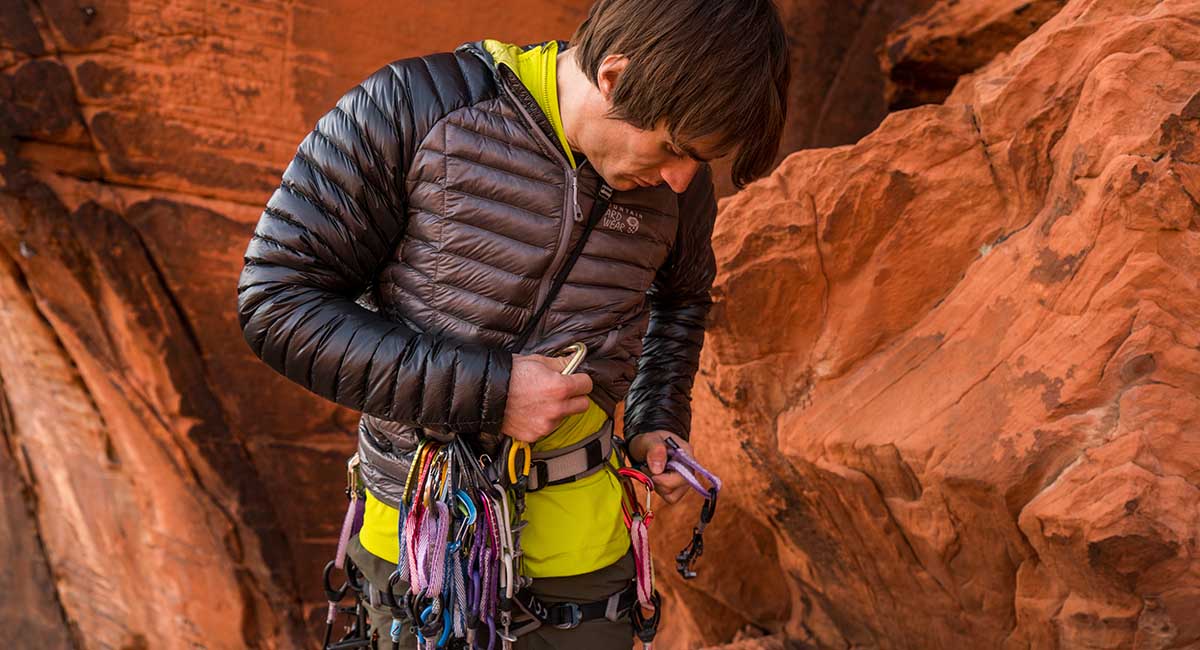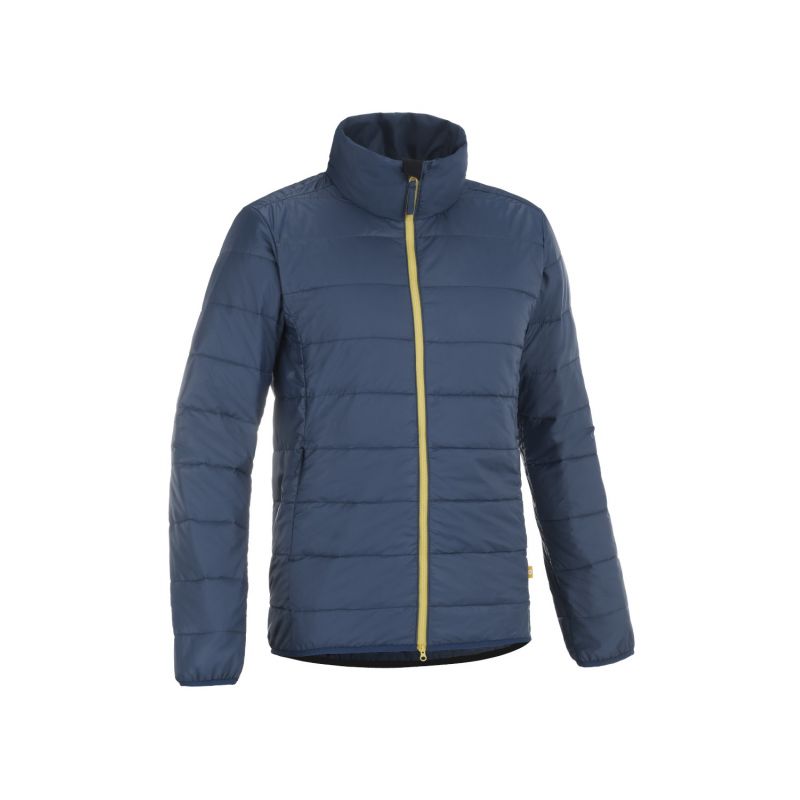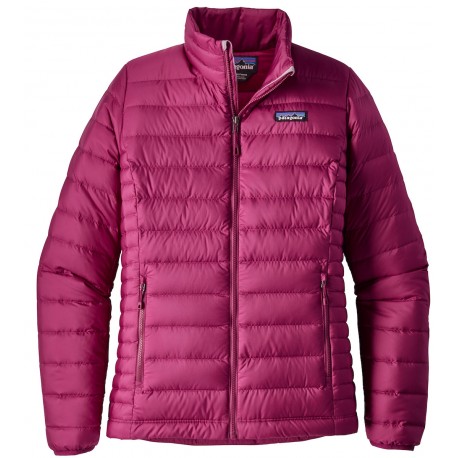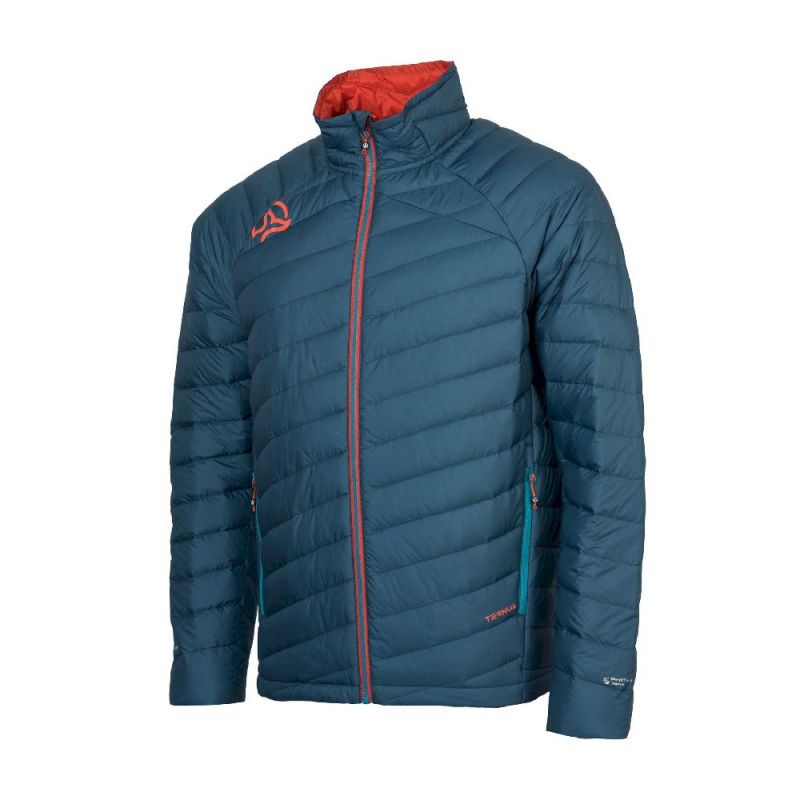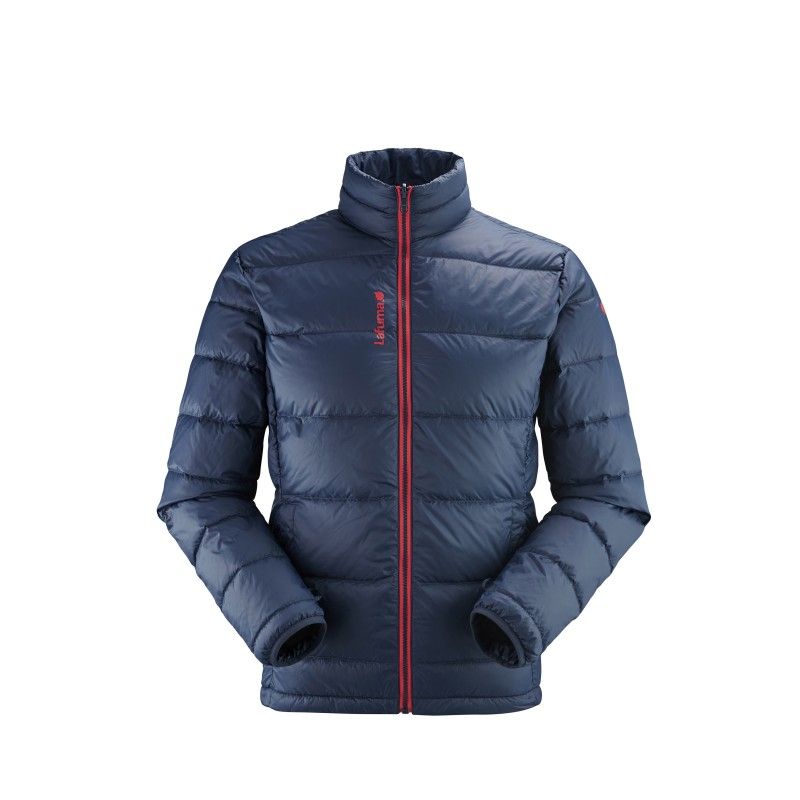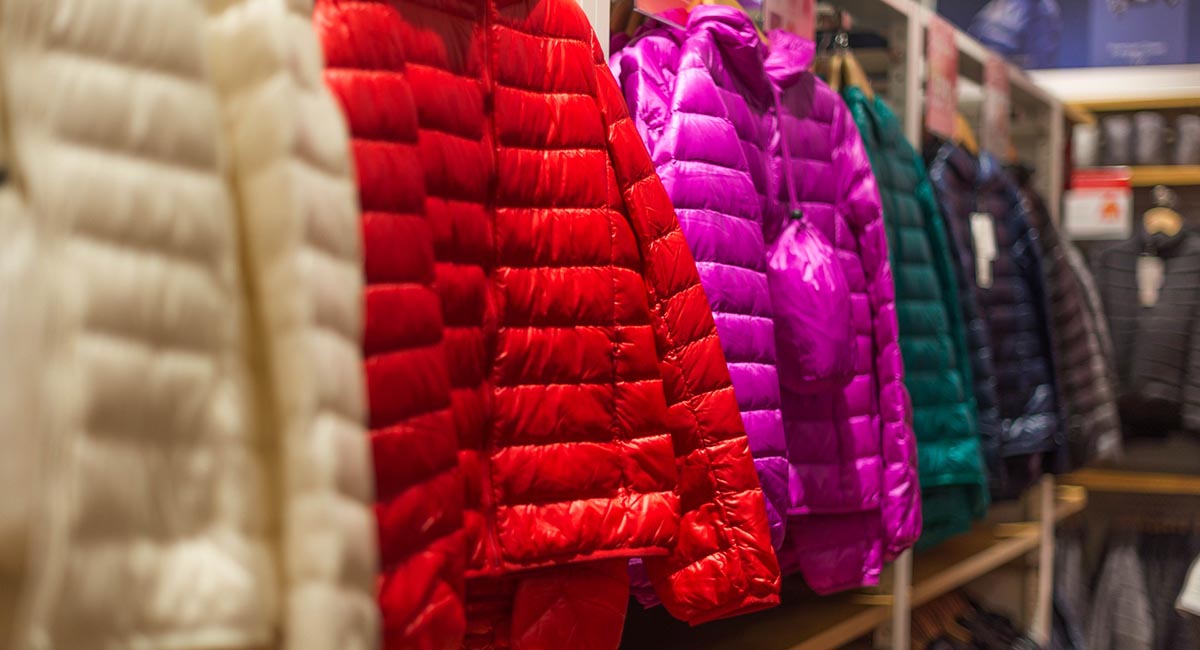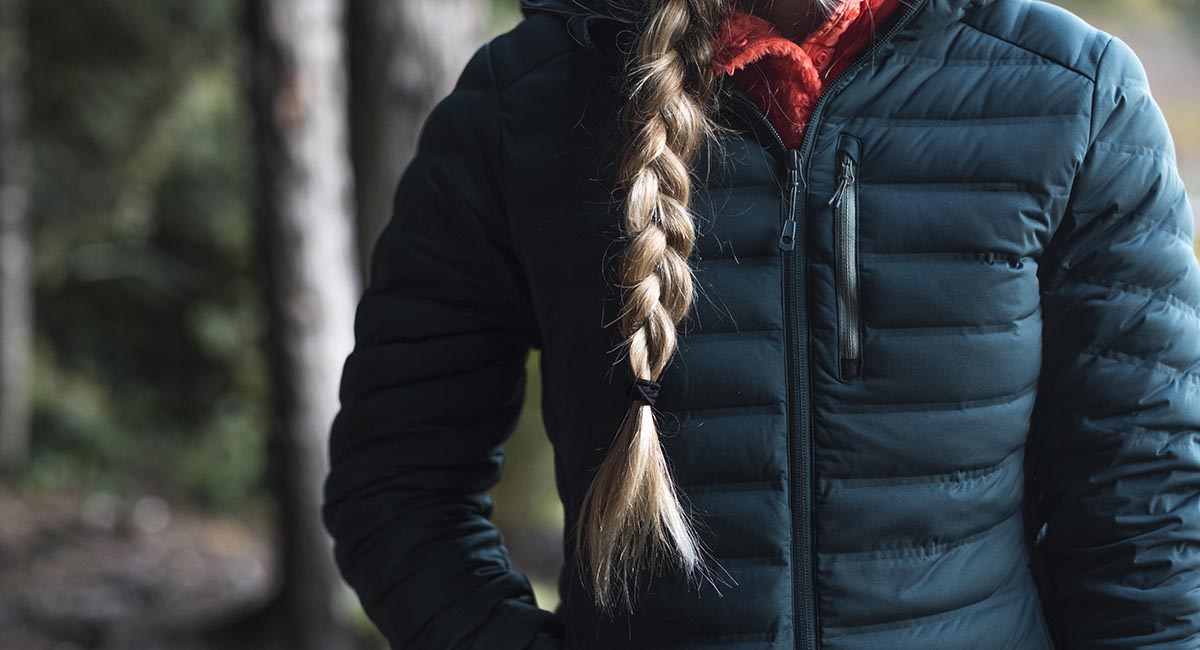You progress on a rugged ridge, an icy wind blows on your rope, the cold slowly begins to envelop you. That's when you pull out your weapon against cold snaps from the bottom of your backpack: your down jacket. The soft warmth it gives you will invigorate you, and you will be ready to brave the impossible again. If, in truth, you may not experience such adventurous conditions every day, your down jacket will still remain an essential part of your equipment. Warm, light and breathable, it will be essential for all your adventures.
For this, how can you be sure to pick the right down jacket? What features should I look for optimal performance? Which down jacket to adopt for my activity? Synthetic or feather: which down jacket is warmer? Is a down jacket waterproof? So many questions that you ask yourself in order to best prepare your outing in the mountains or in the great outdoors. In order to prevent you from hypothermia and to guide you in choosing the best down jacket possible, we have gathered all the information you need so that you can choose your down jacket with complete peace of mind.
Follow the guide to find out everything you need to know to choose your next down jacket
- The benefits of wearing a down jacket
- Which down jacket is the warmest?
- Choosing the right down jacket: other selection criteria
- Choosing a down jacket according to your practice
- Eco-responsible down jackets
- How do you know if a down jacket suits you?
- How to take good care of your down jacket?
The benefits of wearing a down jacket
Using a down jacket allows you to keep your body warm in all circumstances. If you are confronted with the cold, it will be a useful tool to avoid heat loss or even hypothermia. Suitable for cool summer evenings as well as the most extreme conditions at high altitude, the best down jackets will allow you to maintain constant body heat.
The down jacket is also an extremely compressible garment. This technical characteristic allows it to be easily stored in a backpack and to accompany you absolutely everywhere. Lightness and compressibility are characteristics highly sought after by mountain enthusiasts for their equipment. Limiting the weight of clothing while maintaining optimal thermal performance is an argument of choice for wearing a down jacket.
Is a down jacket waterproof?
Just be careful, the down jacket is not waterproof clothing and is not recommended to protect you from bad weather. It is generally used as an insulating layer (second layer) in the 3-layer system. This system includes a first layer close to the body, allowing the evacuation of sweat.
The second layer is an insulating layer providing significant thermal insulation. Finally, the third is a waterproof and breathable jacket against the vagaries of the weather. In this configuration used by most mountaineers, the down jacket is used as a second layer.
Like softshells, the down jacket protects against the cold and limits heat loss. Nevertheless, it has much higher insulating powers and adapts more easily to low temperatures. This is partly due to the very construction of the garment.
Mountain down jackets are not, in fact, designed like other clothing. Conventional clothing has only one insulating and resistant layer. The down jackets, on the other hand, are constructed in two distinct parts in order to provide increased thermal performance.
The first part, consisting of the padding, is compressed against a wall, also called an envelope, representing the second part. The type of fabric used to design the wall is very thin and resistant, allowing the down to be held in place. This thin fabric also improves the compressibility and lightness of down jackets.
An argument of choice in favor of their use in all sports activities in the mountains.
What is the fill power of a down jacket?
Down jackets keep you warm. Until then, we don’t teach you anything. However, do you know how they manage to provide you with constant and pleasant heat?
Everything is played inside the down jacket, with its insulation. Whether synthetic or natural, this insulation helps retain air between the two walls of the down jacket. The air, thus heated by your body, is retained by the insulation and keeps you warm.
The ability to trap air, especially for down, is called fill power. Note the swelling power of a leather down jacket. In order to determine the fill power of down, a small amount of down is placed in a cylinder before the sample is compressed.
The volume that the sample will take up after compression will be its level in cuin. The higher the fill power of a down jacket, the more it will be able to trap air and be warmer. For this, the higher the cuin level, the better the down jacket is thermally efficient.
Keeping the body warm in all circumstances, down jackets offer many different features. Some of them are more important than others and require more attention. Insulation is surely the most important of these and exists in two different forms.
Synthetic or natural, the insulation allows various uses of down jackets depending on the context. We therefore offer you a short summary of insulation, an essential characteristic.
Which down jacket is the warmest? All about feather or synthetic
The insulation of your down jacket is an essential element to take into account in order to choose the model that suits you best. You will find two types of insulation on the market: natural down insulation or synthetic fiber insulation. Both have advantages and disadvantages that should be taken into account when choosing the right down jacket.
Down Jackets
In the market for compressible down jackets, natural down occupies a major place. For this, you will regularly find natural goose down (white or gray) or natural duck down. The use of natural down is widespread due to its insulating abilities and increased compressibility. If you have followed the previous paragraph correctly, the air trapping power of down is characterized by what is called the swelling index measured in cuin.
The higher the measurement in cuin, the warmer the down jacket will be.
You will therefore find duvets at 500 cuin, 600 cuin, 800 cuin... Consequently, down jackets between 300 and 500 cuin will be moderately warm, those between 500 and 700 cuin will have efficient insulation and those over 800 cuin will offer you comfort with outstanding performance. To measure the different heat levels of down jackets, simply multiply the weight of the down by its measurement in cuins.
For example, consider two down jackets with the same weight of insulation (200 g), but with different loft ratings (400 cuin and 800 cuin). By multiplying 200 g by the 400 cuin of the first down jacket, you will get 45,000, being an equivalent measure to a weakly insulating down jacket.
For the same weight but with 800 cuin, you will get 160,000, the measure corresponding to a down jacket with ultra-efficient insulation. However, a down jacket made entirely of down would be suffocating and would have difficulty maintaining an even distribution of down. For this, manufacturers add a small amount of feathers.
The feathers make it possible to stabilize the down, but above all to ensure increased breathability. So be sure to always look at the composition of the padding. However, note that the more feathers you add, the less the down jacket will perform and be of quality. Feathers are, in fact, heavier than down, less compressible and trap air less well.
For difficult conditions, buying a down jacket with as few feathers as possible is highly recommended. You will therefore find on the market distributions of 80/20, 90/10 or 95/5 (down/feathers). More economical than down, feathers also make it possible to offer less expensive down jackets to consumers.
Now that you know all the specificities of natural down, let's take a look at the advantages and disadvantages that it can give you. First, natural down insulation has much better thermal benefits than synthetic fiber. We therefore always recommend that people with the cold opt for down. Lightness is another advantage of natural down.
Down jackets will always be exceptionally light, an important characteristic when preparing for a mountain outing. The lifespan of a natural down jacket is also increased compared to a synthetic down jacket. The very resistant duck or goose down will allow your down jacket to offer you optimal performance over time. In addition to an undeniably higher filling power, natural down jackets are comfortable and ensure an even distribution of heat.
However, natural down jackets also have some drawbacks. Natural down is more sensitive to moisture. The swelling power may be altered with too prolonged contact with humidity. Unless you have a coating specially designed to protect the down jacket from moisture, its performance will be immediately reduced.
For this, its maintenance is more complicated.
In addition to a longer drying time than synthetic down jackets, natural down jackets are also generally more expensive.
| Advantages | Disadvantages |
|
|
➤ Women's Down & Insulated Jackets - Shop
➤ Men's Down & Insulated Jackets - Shop
Synthetic down jackets
Synthetic down jackets take an important place in the market today. Their characteristics attract mountaineers and allow increased performance for certain activities and climatic conditions.
Generally made of polyester, the padding material differs from natural down jackets. You will find different compositions of padding on the market. Sometimes entirely made of polyester, some down jackets will also include other materials. In order to measure the heat level of a synthetic down jacket, you have to look at the weight of the insulation.
The greater the weight of the insulation, the greater the thermal performance will be.
However, the insulating power of synthetic down jackets does not depend solely on the weight of the insulation. Indeed, the technology used in its manufacture is also an important factor for the performance of a synthetic down jacket.
You will mainly find Primaloft technologies (One and Sport), Polartec technology, and Coreloft or Ouate technologies. Primaloft technology is one of the most used for synthetic down jackets. The Primaloft One being the most efficient, it will provide you with warmth, lightness and compressibility.
The models equipped with this technology will undeniably perform as well as those in natural down. More economical than the previous one, the Primaloft Sport technology will still offer you significant performance. As for Polartec® technology, it offers, like Primaloft technology, significant thermal protection, increased lightness but above all optimal breathability. Coreloft technology is similar to Primaloft Sport technology in performance and price.
Finally, the generic Ouate insulation is generally used for entry-level down jackets. Down jackets with wadding insulation are certainly less efficient than synthetic models, but still have greater thermal insulation than other types of insulating clothing (fleeces, softshells).
A major advantage of synthetic down jackets, is that they are not afraid of water and retain their insulating power intact, even when wet. Not afraid of water, they wash easily, allowing quick and efficient maintenance. It also dries much faster, a weight advantage for long mountain expeditions, especially in difficult conditions. More economical, synthetic down jackets will be the perfect compromise between performance and small budgets.
Endowed with many advantages, synthetic down jackets also have some disadvantages that should be detailed. Their thermal insulation is less efficient than that of down jackets.
Packability is also reduced, making synthetic down jackets less practical to slip into a backpack. Heavier and bulkier, they are finally resistant in the long term and must benefit from in-depth care. Water resistance rather than optimal thermal insulation, affordable prices instead of increased compressibility, you will undeniably appreciate the practical aspects of synthetic down jackets.
| Advantages | Disadvantages |
|
|
In synthetic down or natural, down jacket offer a wide variety for mountain enthusiasts. Choosing the right down jacket according to its insulation so that it suits your needs is therefore essential. Nevertheless, other selection criteria must be taken into account. Pockets and hoods as well as the outer fabric are also essential elements in your decision-making.
Choosing the right down jacket: other selection criteria
In addition to the insulation of the down jacket, taking into account other parameters allows you to narrow your search. Indeed, some activities or places require very specific characteristics. The pockets, the hood or the outer fabric are all essential selection criteria for choosing the best men's down jacket or the best women's down jacket possible.
Hood and pockets
We don't necessarily think of these details and yet. The location of the pockets, their number, the presence of a hood or the possibility of removing it, make a down jacket an element compatible with your needs or not.
The hood is an element found on most models of down jackets. In the mountains, the hood will allow you to protect yourself from the cold and the wind, as well as from passing showers. Some will find it essential, others will find it cumbersome and a pocket to store it will be necessary. Some models allow the hood to be stored in the collar or to be removed completely.This makes it possible to optimize the comfort of your down jacket in the event of mild conditions, or conversely, to equip yourself for the worst conditions. For use in town, opting for a format without a hood allows you to adopt a modern style without losing performance. While the hood is something to seriously consider, other features are important in determining which down jacket is right for you.
The pockets should therefore focus all of your attention. Their arrangement on the jacket must adapt to your needs and not hinder the use of other equipment. For example, if you are embarking on the ascent of Mont-Blanc, make sure that your pockets do not interfere with the wearing of the harness and the backpack. Many pockets is more suitable for use in the mountains.
For urban use, you will prefer a more sober style with fewer pockets.
Versatile, warm and respectful of the environment, discover our favourite hooded down jacket: Patagonia Down Sweater Hoody Woman!
The outer fabric
Just as important as the hood or the pockets, the outer fabric of the down jacket is a major design element and should not be overlooked. The outer fabric is naturally thin and resistant. It therefore keeps the insulation in place without adding weight to the entire down jacket.
However, it should not be too thin. Technology always has its limits, and an outer fabric that is too thin would prove to be fragile. If a tear is always regrettable, it is even more so for down jackets.
Natural insulation has, in fact, a tendency to escape more quickly in the event of a hitch than synthetic insulation. For this, be sure to always check the thickness of the outer fabric to avoid unpleasant surprises. For example, for climbing enthusiasts, opting for a down jacket with an abrasion-resistant outer coating is highly recommended.
The partitioning of the down jacket
The partitioning of the down jacket stabilizes the insulation inside the down jacket, and guarantees its balanced distribution. When compressed in the backpack or during exercise, the structure of the padding can be altered and cause significant performance drops. Indeed, without partitioning, the down collects in balls under the pressure of objects and movement.
Humidity can also, especially on natural down, lead to a reduction in the insulating power of the down jacket. For this, most down jackets are partitioned to offer you optimal insulation.
There are two types of partitions. The H partitioning (horizontal and vertical seams) makes it possible to maintain the insulation in compartments and to ensure a large volume. This type of partitioning equips voluminous down jackets but with exceptional insulating powers.
The second partitioning, called crossing, makes it possible to develop finer down jackets. The seams cross the insulation from the inside out and allow these down jackets to remain thin while offering significant swelling power.
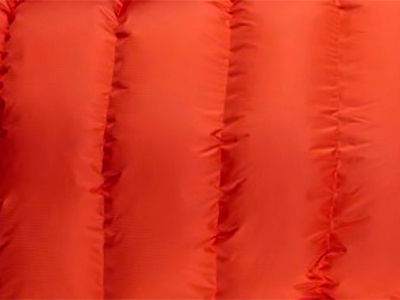 | 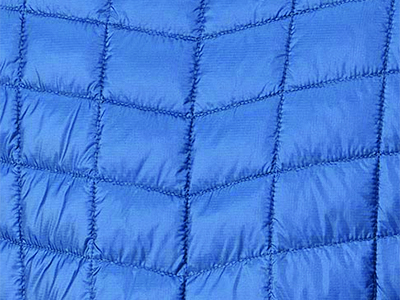 |
Crossing partitioning | H partitioning |
Now that you know all the specificities of down jackets, you must choose yours according to your sporting activities. Mountaineering, hiking, skiing or even for daily use, your needs are different and require different down jackets. For this, selecting the right down jacket according to your activity is essential.
Choose your down jacket according to your activity
As with other mountain equipment, adapting your down jacket to the needs of your practice is essential. You will not use the same down jacket to go to work in winter as to attempt the ascent of Elbrus. For this, we offer you an overview of the major practices and the types of down jackets necessary in order to practice them with complete peace of mind.
Lifestyle down jackets
Are you passionate about the mountains and want to claim it? Lifestyle down jackets are made for you. Most major brands now think of their loyal customers, wishing to combine the performance of their products with an urban and modern look.
By wearing a lifestyle padded jacket, you will show off your adventurous side and love of the great outdoors. It will also be an opportunity to combine the performance of your favorite technical down jackets with a much more sober style, adapted to your daily life.
Specially designed for this purpose, lifestyle down jackets adopt a modern style to suit workers or students. If the style is refined and some characteristics disappear, these models remain ultra-efficient and will ensure you optimal performance on a daily basis. Lifestyle down jackets will indeed be warm and comfortable for winter in the city, robust and stretchy so as not to suffer from the demands of urban use. Vital for urban adventurers, lifestyle down jackets will follow you everywhere in your daily life.
➤ Men's Lightweight Down Jackets - Shop
Down jackets for mountaineering
Down jackets for mountaineering require a large number of characteristics. The first attribute sought by mountaineers is, of course, warmth. When we think of warmth, a down jacket immediately comes to mind. The natural down, with a high inflating power, will be able to protect the mountaineers against the most intense cold.
Adapting the swelling power according to the temperatures imagined will make it possible not to suffocate during the effort.
A filling power of 800 cuin will be perfectly adapted to very largely negative temperatures. With a filling power of 600 to 300 cuin, down jackets will be ideal for cool and slightly negative temperatures in summer. The pockets must also be suitable for wearing the harness and the backpack. In addition, an integrated hood will prove very useful for bivouacs or simply to keep your head warm.
Finally, the breathability must be optimal to avoid a hot water bottle effect during exercise. Lightweight and compressible, you can easily slip them into your backpack, or in the chest pocket of your down jacket.
Be careful, however, to use them in dry conditions or protected by a waterproof hardshell jacket. Once wet, the down could be cold and uncomfortable, compromising the rest of your ascent.
➤ Women's Down & Insulated Jackets for Mountaineering - Shop
➤ Men's Down & Insulated Jackets for Mountaineering - Shop
Down jackets for skiing
Going on an adventure in the powder snow, and admiring the splendours of the mountains in winter, requires suitable equipment. For this, choosing a suitable ski jacket is essential. Down jackets are again recommended. Warmer and lighter, they will allow you to spend the day on the slopes without suffering from the cold or the weight of the equipment.
They will also be particularly pleasant for après-ski, to keep you warm in the evening. A fill power is recommended to effectively insulate you from the most biting cold.
A down jacket with H compartments will keep the down in place in the compartments, and thus prevent heat loss. Breathability is also an essential aspect of your selection for ski jackets. The down will allow you to avoid the hot water bottle effect and thus guarantee you pleasant warmth throughout the day.
A synthetic down jacket would be too heavy and not warm enough for skiing. Its lack of compressibility could be a problem in small ski bags used on the slopes.
➤ Women's Down & Insulated Jackets for Skiing - Shop
➤ Men's Down & Insulated Jackets for Skiing - Shop
Down jackets for hiking
Hiking requires less insulating power than skiing or mountaineering. For this, a synthetic down jacket is particularly suitable. The insulating power will be more than enough, even for the coldest conditions. The lack of compressibility will not be felt in bags that are generally larger than those for skiing or mountaineering. The resistance of the synthetic insulation will be pleasant during short showers or wet days.
Hiking is an activity practiced more regularly and therefore requires more regular maintenance of the equipment. For this, synthetic down jackets, which are particularly easy to maintain, will be ideal. Weight will also not be an issue for generally undemanding day trips.
Finally, the more economical price of these down jackets is in keeping with a practice that does not require extremely technical equipment. While this is true for hiking, trekking requires many different characteristics.
To set off on an adventure and carry out your trek with complete peace of mind, we recommend choosing a down jacket with characteristics similar to those designed for mountaineering. Some treks will take you to high altitudes and expose you to very cold temperatures. For this, opting for a down jacket, with a minimum fill power of 600 cuin is recommended. With sometimes technical passages, the compatibility of your down jacket with a harness may also be necessary.
Finally, over long distances, the weight of the bag can be painful. You will greatly appreciate the lightness provided by the natural down as well as its compressibility to slip your down jacket to the bottom of the backpack.
➤ Women's Trekking Down & Insulated Jackets - Shop
➤ Men's Down & Insulated Jackets for Hiking - Shop
Expedition down jackets
Great expeditions, whether in the Himalayas or not, have always required state-of-the-art equipment. So whether you're setting off to conquer the Roof of the World or attempting the ascent of the Vinson in Antarctica, a down jacket specially designed for extreme temperatures is essential. To withstand the most extreme cold and protect you from total hypothermia, some brands offer so-called expedition or extreme cold down jackets. Much more imposing than classic mountaineering jackets, they will keep you warm where men are not supposed to be.
For this, expedition down jackets are generally made of down to maximize your warmth and compressibility in the backpack. With a filling power between 750 and 800 cuin, they are ultra-efficient. In addition, in order to compensate for the effects of humidity on the down, expedition down jackets are equipped with highly water-repellent or even totally waterproof membranes.
Finally, for a perfect match with the needs of mountaineers, the expedition down jackets are all compatible with wearing a harness and a backpack. True concentrates of technologies, they will follow you to the highest Himalayan peaks or in the most intense winter treks in the Canadian Far North. A comparison of extreme cold down jackets has allowed us to draw up a list of models recommended for the high mountains.
➤ Women's Winter Coats & Jackets - Shop
➤ Men's Down & Insulated Jackets for Mountaineering - Shop
Climbing down jackets
Climbing is a committed and very demanding discipline. Like other mountain enthusiasts, climbers can suffer from the cold. For this, down jackets specially designed for this practice are offered by the main outdoor brands. In order to perfectly meet your needs as a climber, climbing jackets are first compatible with wearing a harness, an essential part of your climbing equipment.
In addition, in order not to hinder your movements, they are generally designed in stretch materials to offer you exceptional freedom of movement.
Lightness is also an essential characteristic of climbing jackets. In order not to weigh you down during your ascents, the weight is reduced to the maximum. Another essential characteristic, to say the least, is robustness. Your climbing jacket must imperatively have a high resistance to abrasion to avoid tearing after repeated contact against the rock.
You will find, for this on the market, very resistant down jackets designed in RipStop material to avoid snags. Down is therefore particularly recommended. Finally, septic about the resistance of down to moisture on the wall can then opt for a hybrid down jacket, combining down and synthetic insulation.
➤ Climbing Down & Insulated Jackets - Shop
Eco-friendly down jackets
In order to preserve the environment and develop a more sustainable textile industry, some brands make eco-friendly down jackets. One of the most famous label, the RDS (Responsible Down Standard), certifies the put into place of an eco-friendly production process for natural down jackets. The RDS assures that the down and the feathers used in the making of the jacket come from animals well looked after and who did not suffer. This label’s goal is to promote a better knowledge towards mountain passionate about natural resources.
How to live without such a certification when you are a nature lover? You will be now more aware of this logo representing a little white feather, symbol of durability and respect of the environment. Other aspect, such as the usage of recycled material, enable also to lean towards eco-friendly down jackets.
How do you know if a down jacket suits you?
It is recommended to try out your down jacket, keeping in mind the idea of keeping a wide enough space to have the possibility to add multiple layers underneath it. Moreover, taking a too fitted down jacket would diminish your movement capacities and slow down your progression. The down jacket should not be too short or go up too much in the case of vertical movement. Lastly, if you have the possibility, you can try the down jacket with your backpack to check it the pockets are compatible.
How to take good care of your down jacket?
A down jacket has to be regularly taken care of in order to offer you optimal performances in the mountains. However, the maintaining differs depending on the jackets' insulation. Rightly, it will be much easier to take care of a synthetic down jacket than of the natural one.
Water-resistant, synthetic down jackets can easily be washed with your laundry. Think about taking off carefully all of the dust after use enables also to maintain the insulation power and breathability of the down jacket.
For natural down jacket, place it flat and clean it with a lightly humid washing glove. Be careful, you should not but water on the down as it would diminish its insulation power. To make it dry, you will only have to leave it on a clean flat surface or on a hanger.
You are now an expert in down jacket and can easily choose the down jacket most adapted to your activity. Synthetic or natural, it's up to you to decide depending on your needs and preferences.
If doubts still exist, do not hesitate to ask us all of your questions! Our team of passionate will answer your questions on the +33 (0) 1 846714 24 (free calls). You can also write to us directly through our Hardloop Help Center!
➤ Hiking Down & Insulated Jackets - Shop
Crédits photos : ©Columbia - ©Mountain Hardwear - ©Hardloop - ©Pexels/Pixabay
